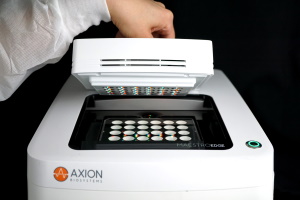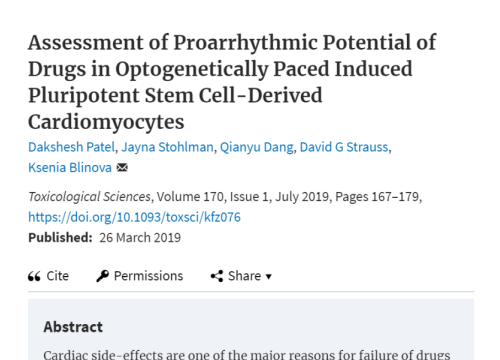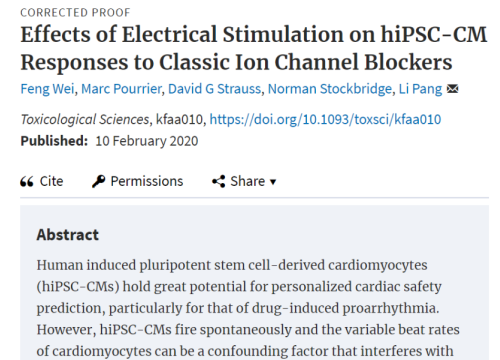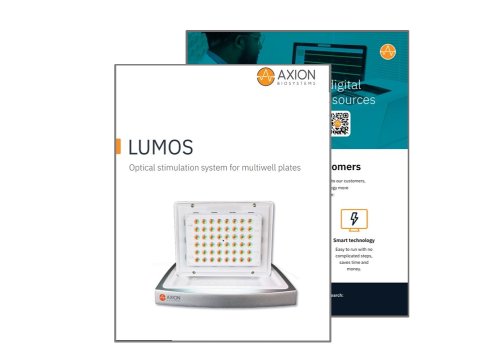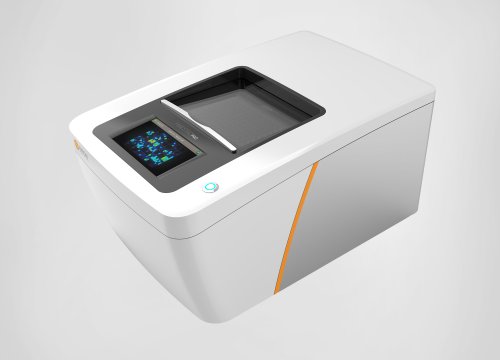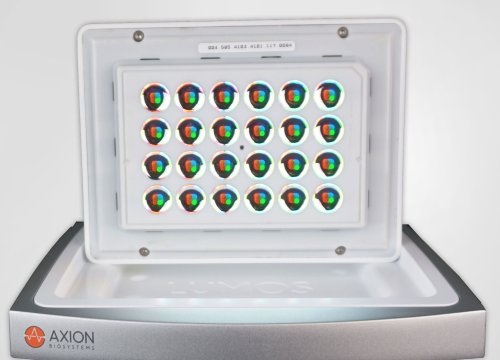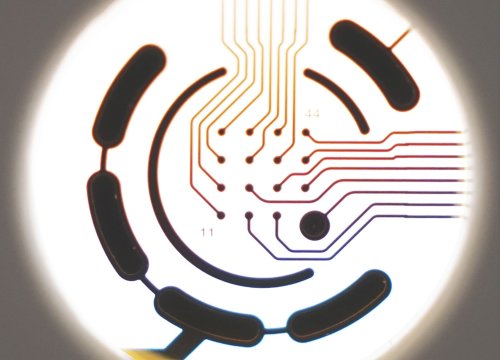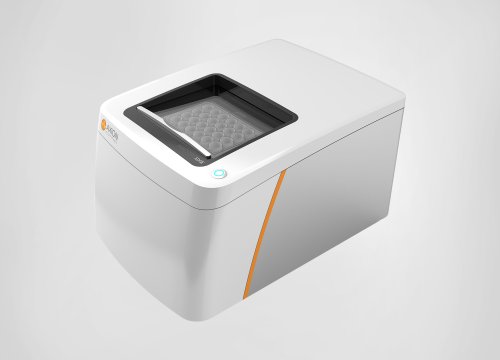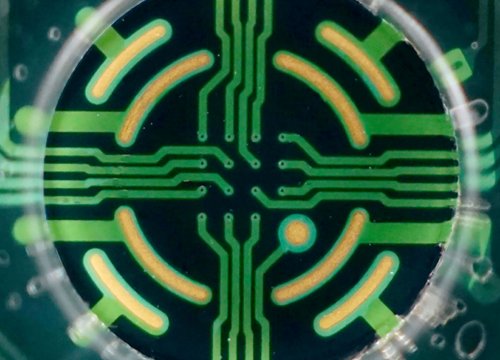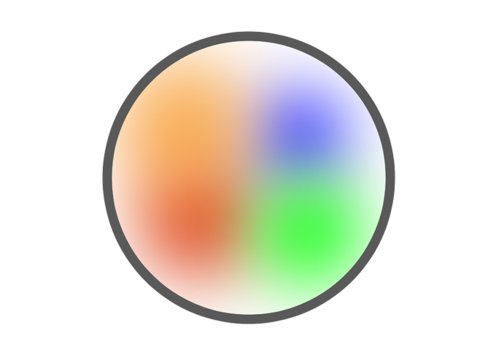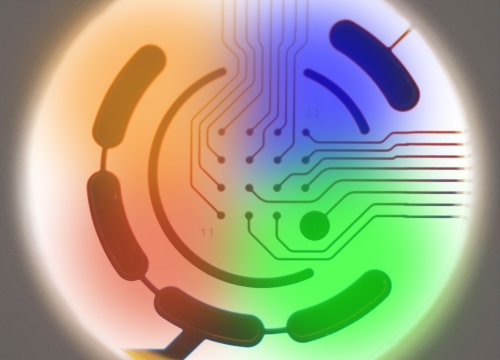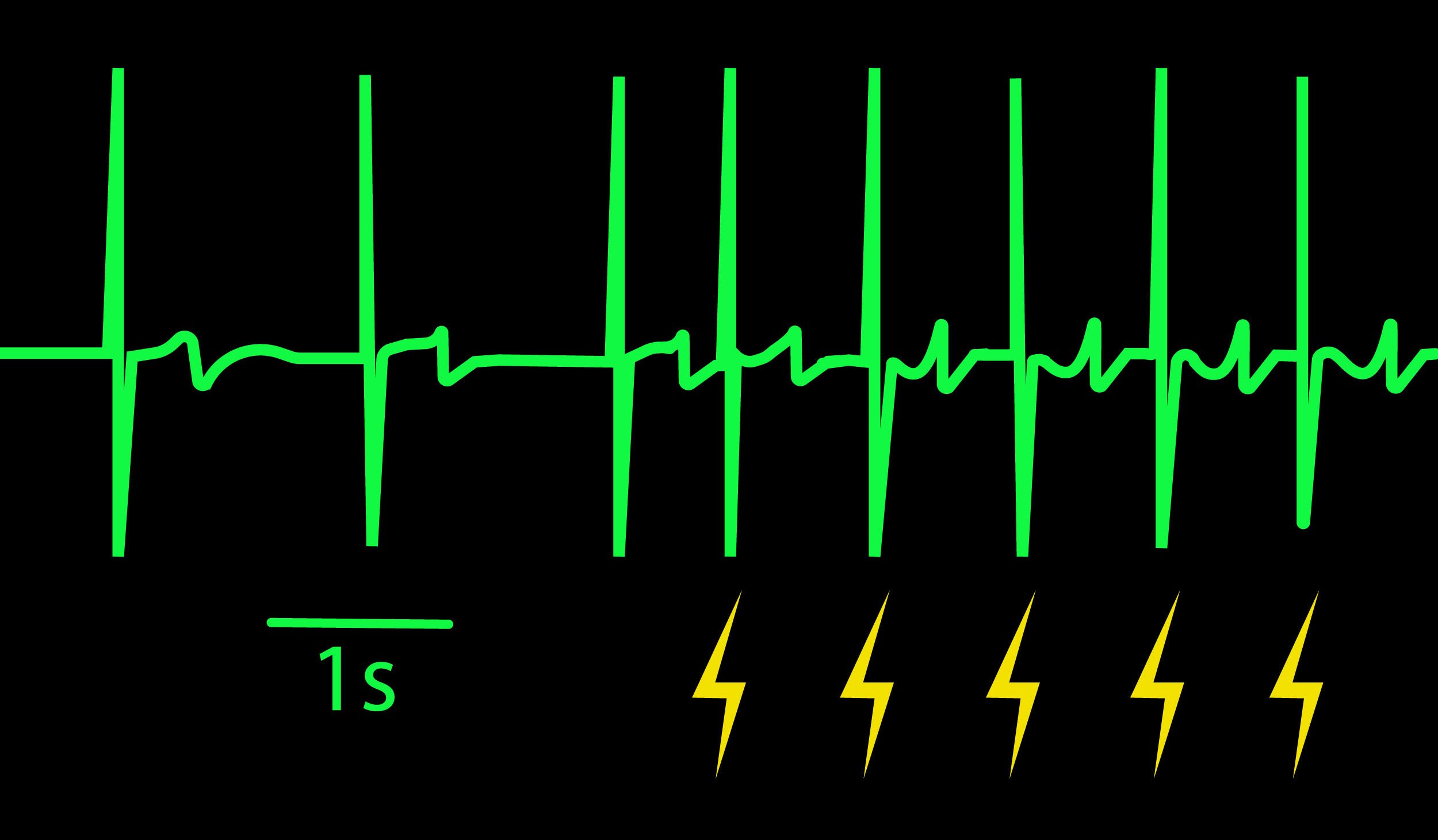
ペーシング(電気刺激) により、心筋細胞の拍動レートをコントロールすることができます。拍動レートを一定化することにより、使用依存性(例 : 拍動レート依存性)化合物の評価などが可能になります。また、オプトジェネティクスでは、特定因子への刺激や、アーチファクト無しのデータ測定など、より精度の高い心筋細胞アッセイが行えます。
Maestro MEAは、電気刺激の印加が可能です。また、光刺激装置 LUMOS を用いて光照射によるペーシングも可能です。拍動レートのコントロールは、well 間及びプレート間差を抑制するなど、心筋細胞アッセイの精度を向上させます。
ペーシングによるアッセイ品質・再現性の向上
化合物の誘発よる心筋細胞の Field potential duration (FPD) 変化の検証は、新薬の安全性評価試験において広く用いられています。しかしながら、心筋細胞の再分極のタイミングは拍動レートと連動し、FPDは拍動レートの変化によっても変化します。ペーシングによる拍動レートの一定化は、拍動レートによる FPD 変化を排除します。また、well 間差、アッセイ間差を抑制し、アッセイの精度を向上させます。
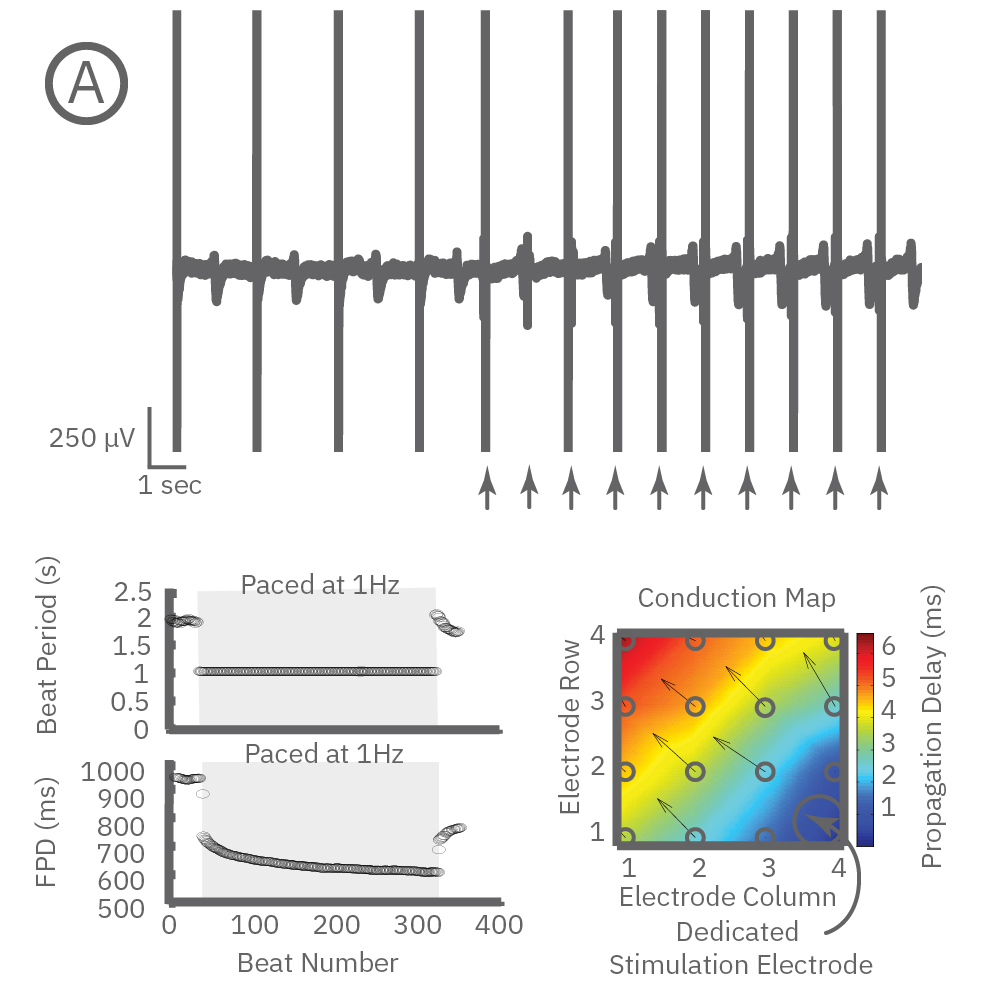
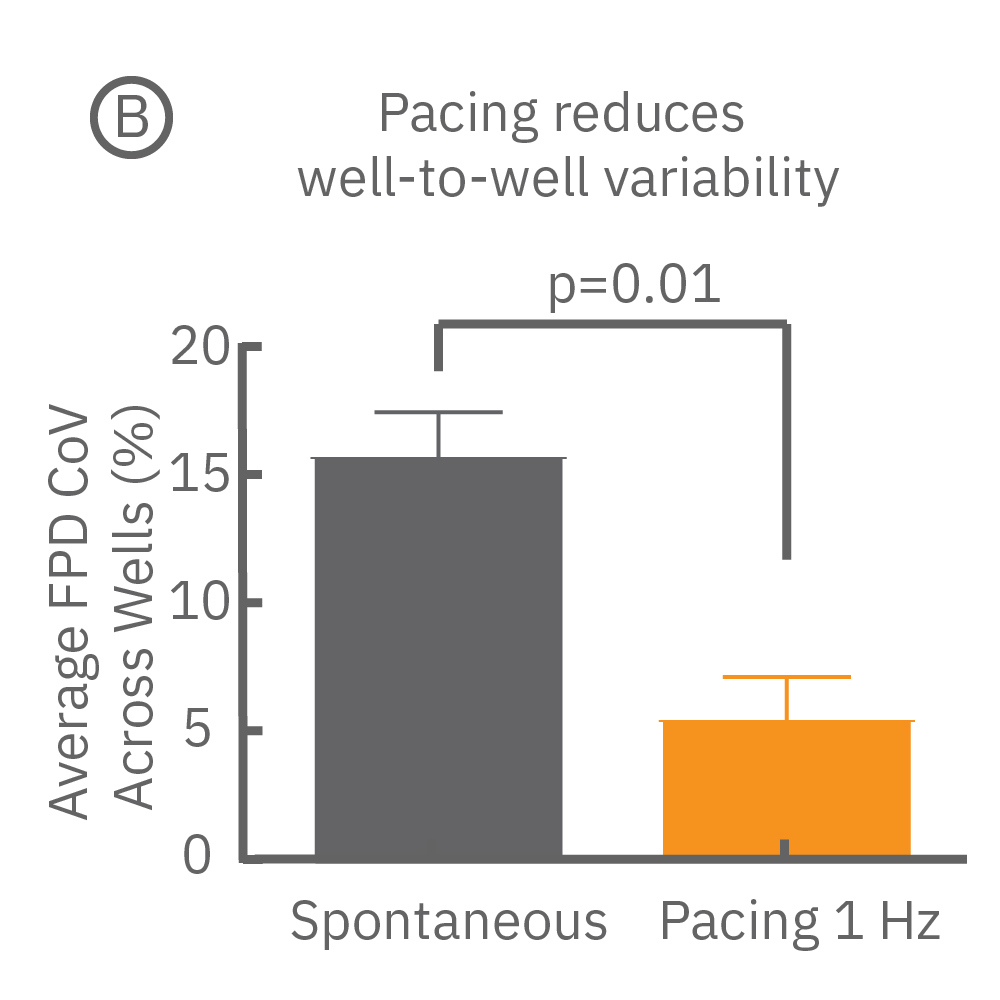
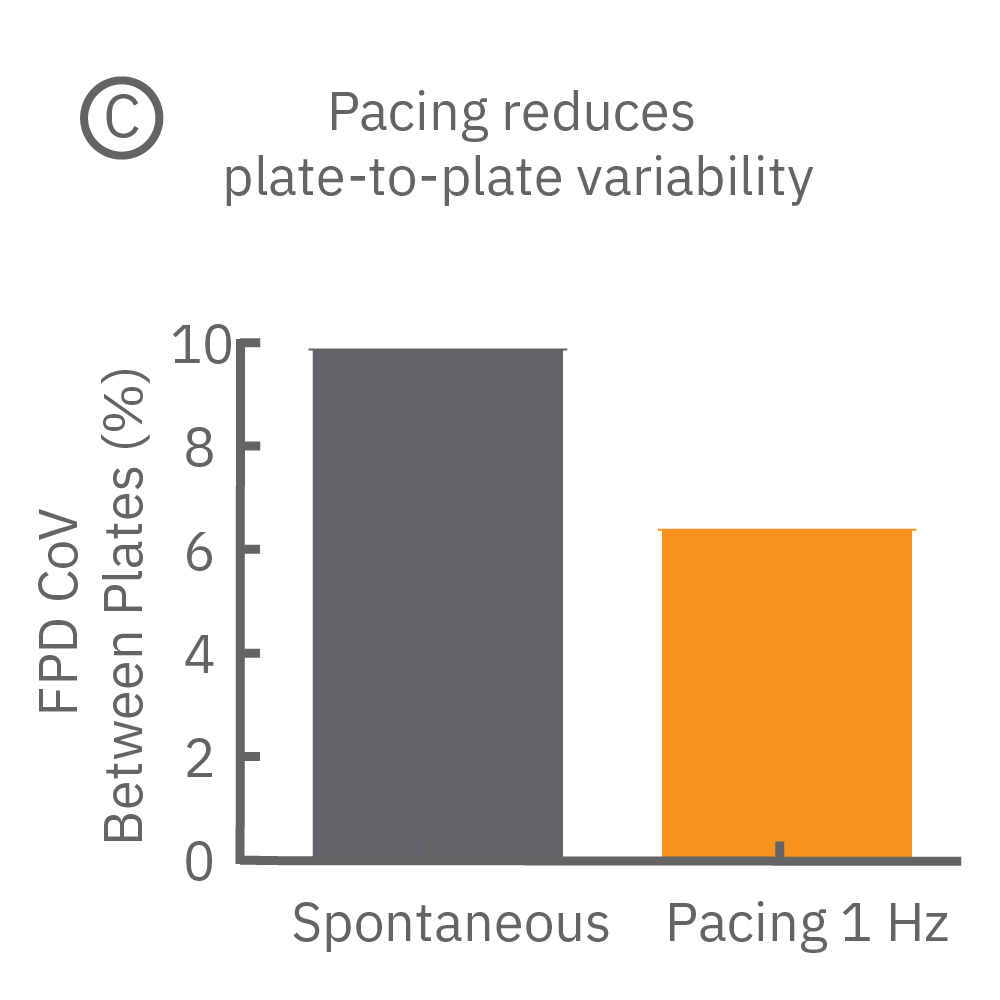
(A) 電気 (或いは光)ペーシング下で得られた心筋細胞の応答波形と各解析結果。上図は測定された生波形で、矢印はペーシングの印加を示す。左下段は拍動間隔 (Beat Period) 及び FPD (Field Potential Duration) の変化、右下段はシグナル伝播を示す。
(B,C) Pluricyte® 心筋細胞から得られた、自発応答時とペーシング応答時におけるWell毎 (B)、及びプレート毎(C)の変動係数 (CoV)。ペーシングにより、Well 間のFPDのばらつきは大きく減少した(p=0.01、B)。また、プレート間のばらつきにも減少が得られた。
拍動レート制御による検証
化合物には、使用依存性を示すものが多くあります。拍動レートの遅延時に強い効果を示す「逆使用依存性」は、催不整脈リスクの重要な指標の1つです。一部の Maestro MEA プレートには大容量刺激印加が可能な電極が装着されています。心筋細胞へのペーシングにより自在に拍動レートをコントロールし、このような依存的効果を検証することが可能です。
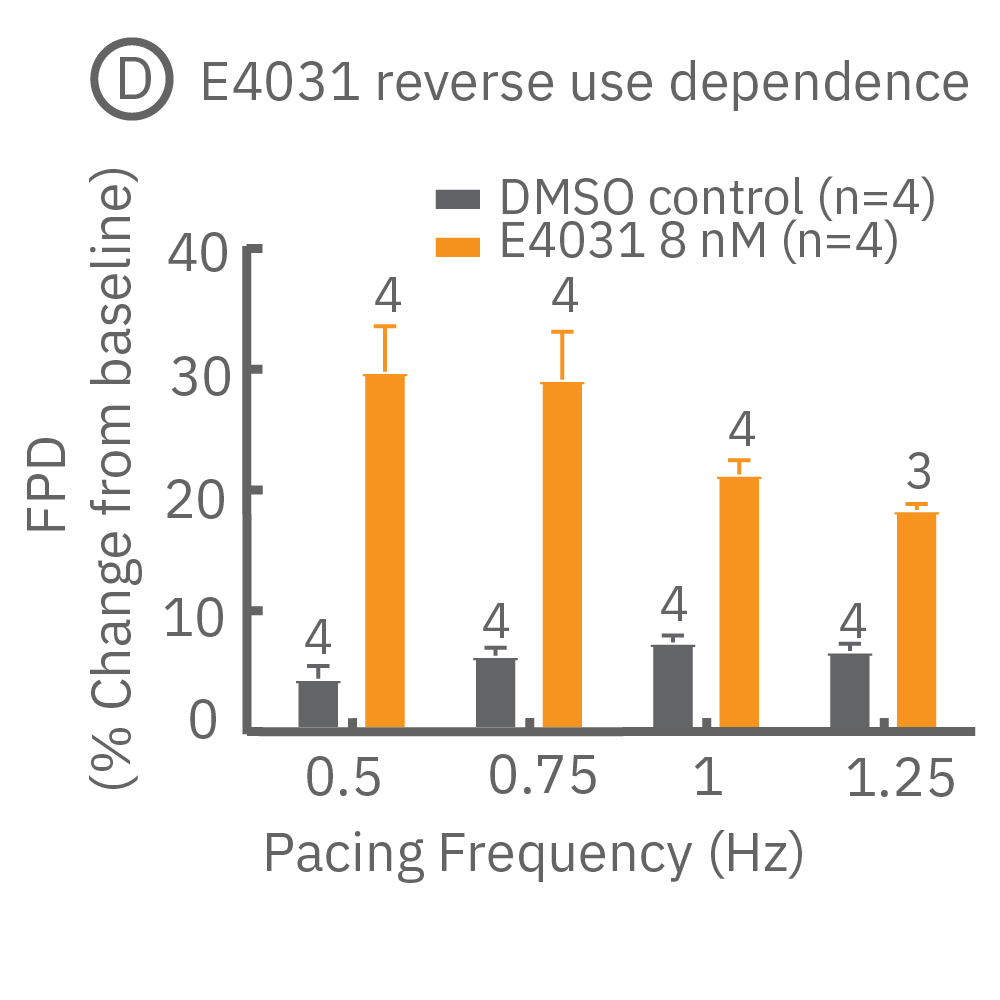
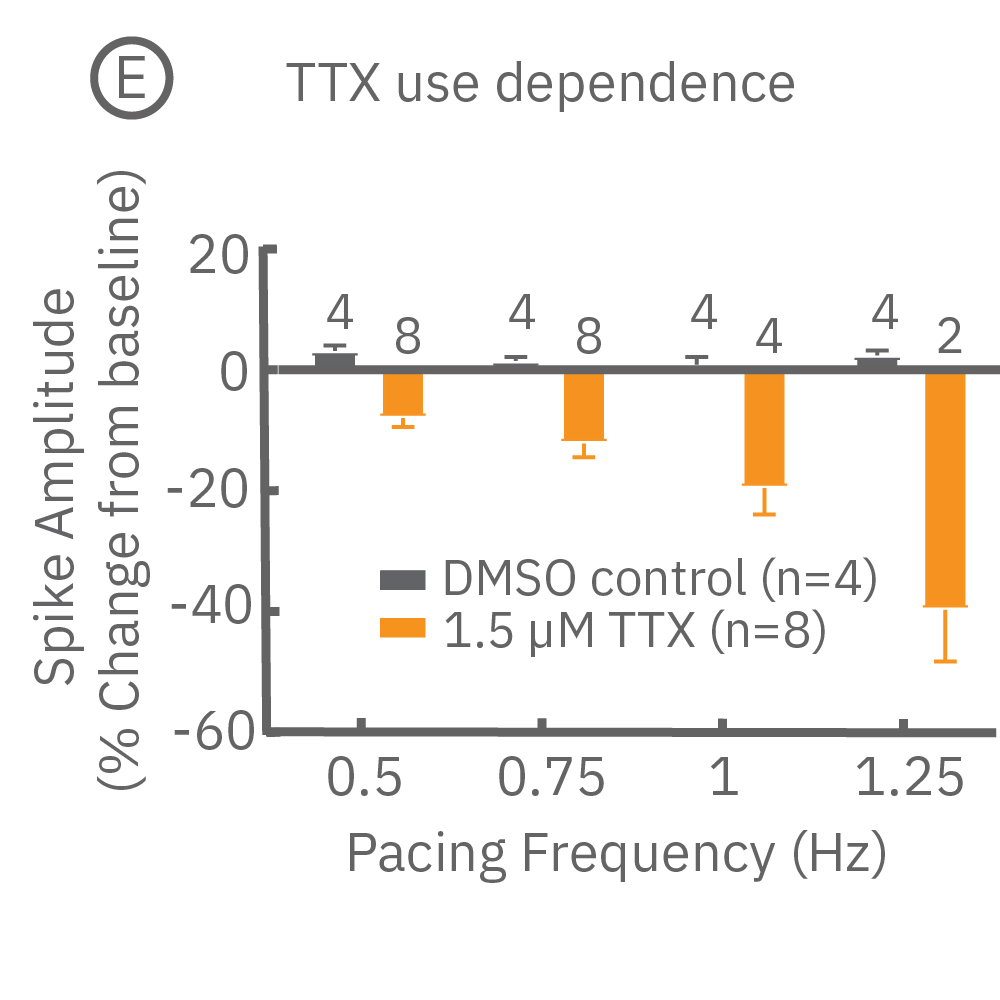
(D) Pluricyte® 心筋細胞を異なる刺激頻度でペーシングし、E4031 (hERG チャネルブロッカー、オレンジ色)とDMSO (グレー色)を投与してFPDを測定した。E4031 投与時、FPDはペーシングレートの上昇に伴い減少し、その逆使用依存性が示された。
(E) 同様に Pluricyte ® 心筋細胞ペーシング下で、TTX (ナトリウムチャネルブロッカー,オレンジ色) と DMSO (グレー色)を投与した際の 脱分極スパイクの変化を示す。TTX 投与時、スパイク振幅値はペーシング頻度上昇に伴い減少し、その逆使用依存性が示された。
(D,E 共に、バーは平均値の標準誤差、棒グラフ上の数値はペーシングに成功したwell数を示す。)
ペーシングによるFPD-拍動間隔相関の検証
心筋細胞の再分極は本質的に拍動頻度に伴い変化します。一方で、それぞれの薬物に対する反応は極めて敏感です。本事例では、オプトジェネティクス刺激により拍動頻度を一定に保ちながら、FPDを測定しました。
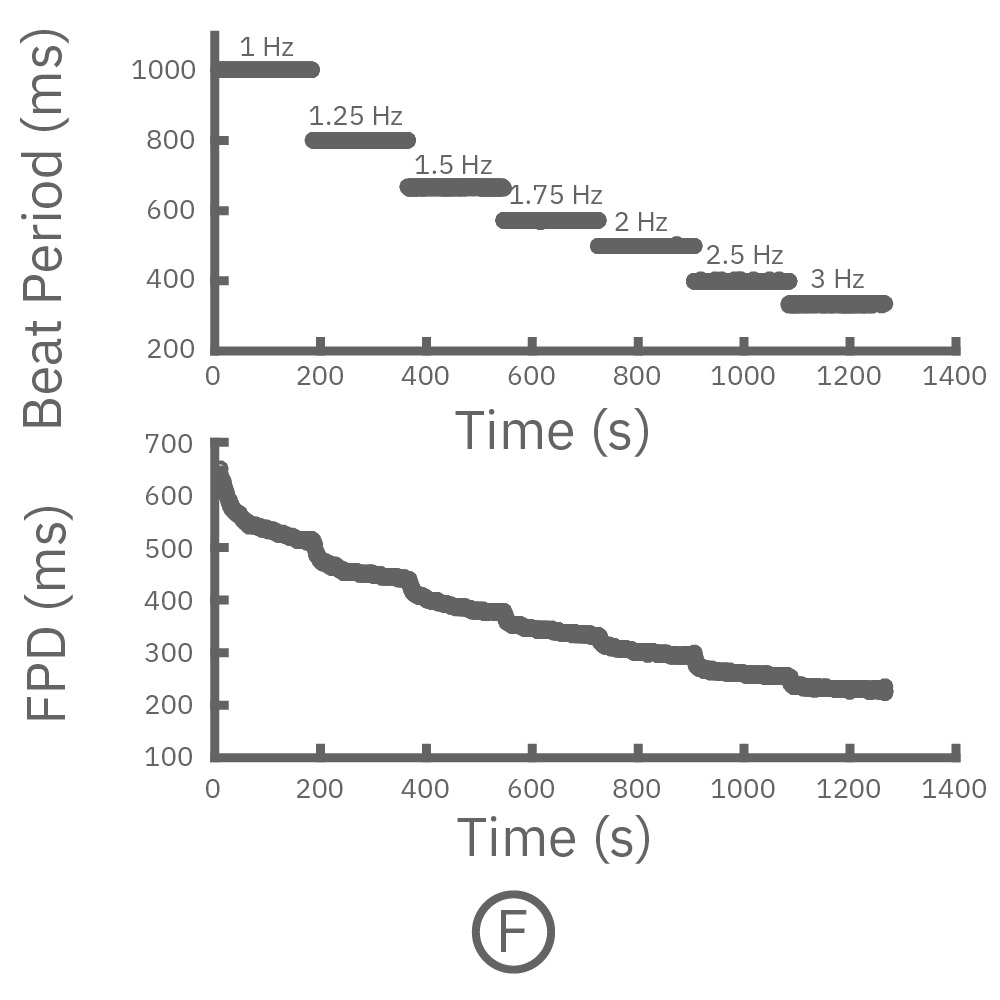
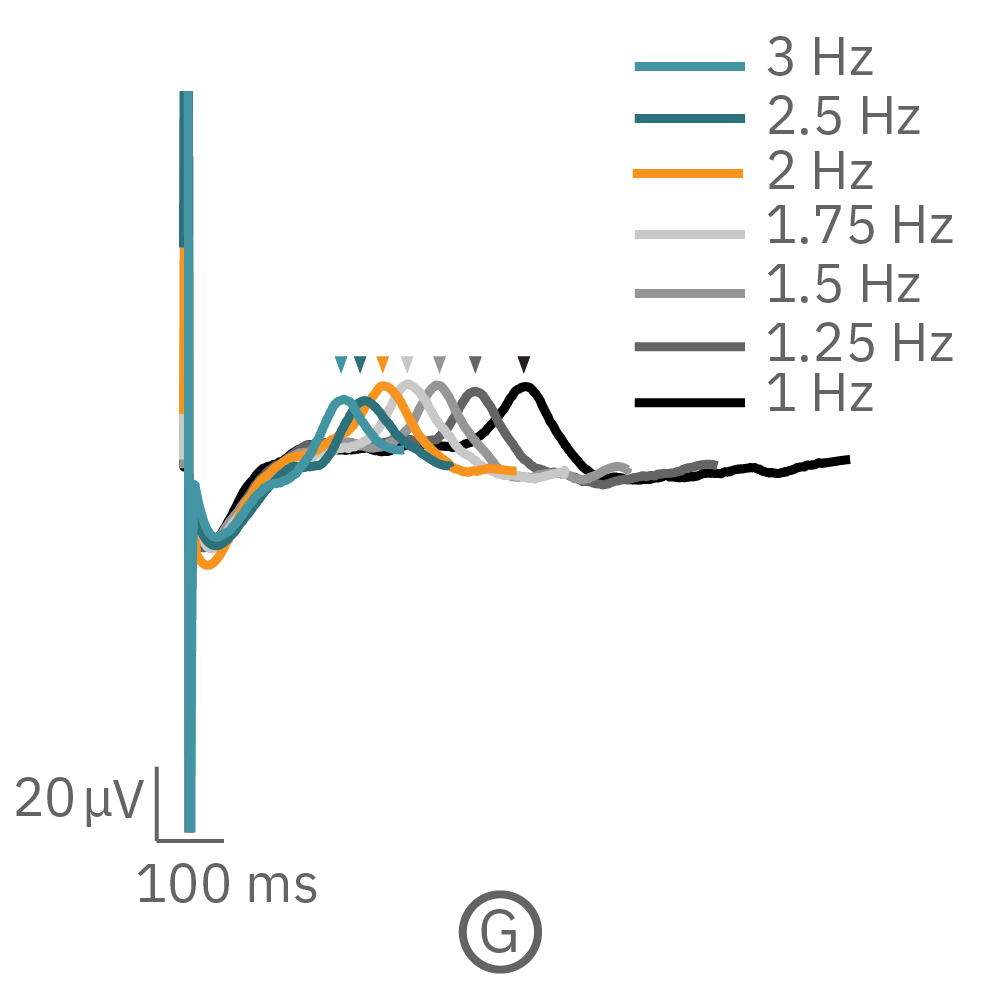
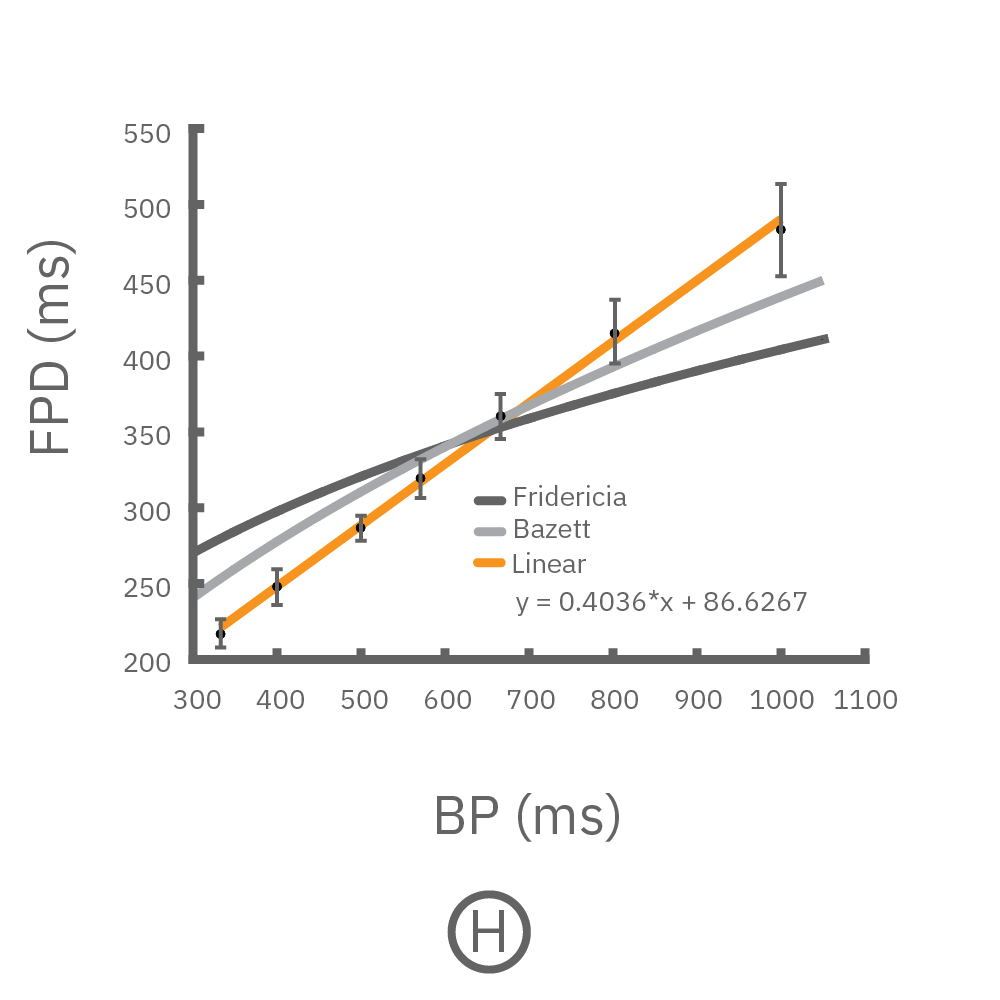
(F,G) Pluricyte® 心筋細胞にペーシングを印加し、ペースレートを段階的に上昇させた(Chirp アッセイ)。F下段は~3Hz のペーシング下において、各拍動レート毎に得られた Field Potential Duration (FPD) を示す。Gは各拍動レートから得られた波形を示す。
(H) 臨床で用いられる典型的な補正式 (Fridercia、Bazzett)によるFPD-拍動間隔の相関(グレー)と LUMOS 光刺激装置による光刺激による相関(オレンジ)を示す。光刺激により、補正式よりも正確な相関が示された。
ペーシングによる不整脈リスクの定量化
本事例では、光刺激により拍動レートをコントロールし、拍動レート依存性を排除した不整脈リスクの定量化を検証しました。
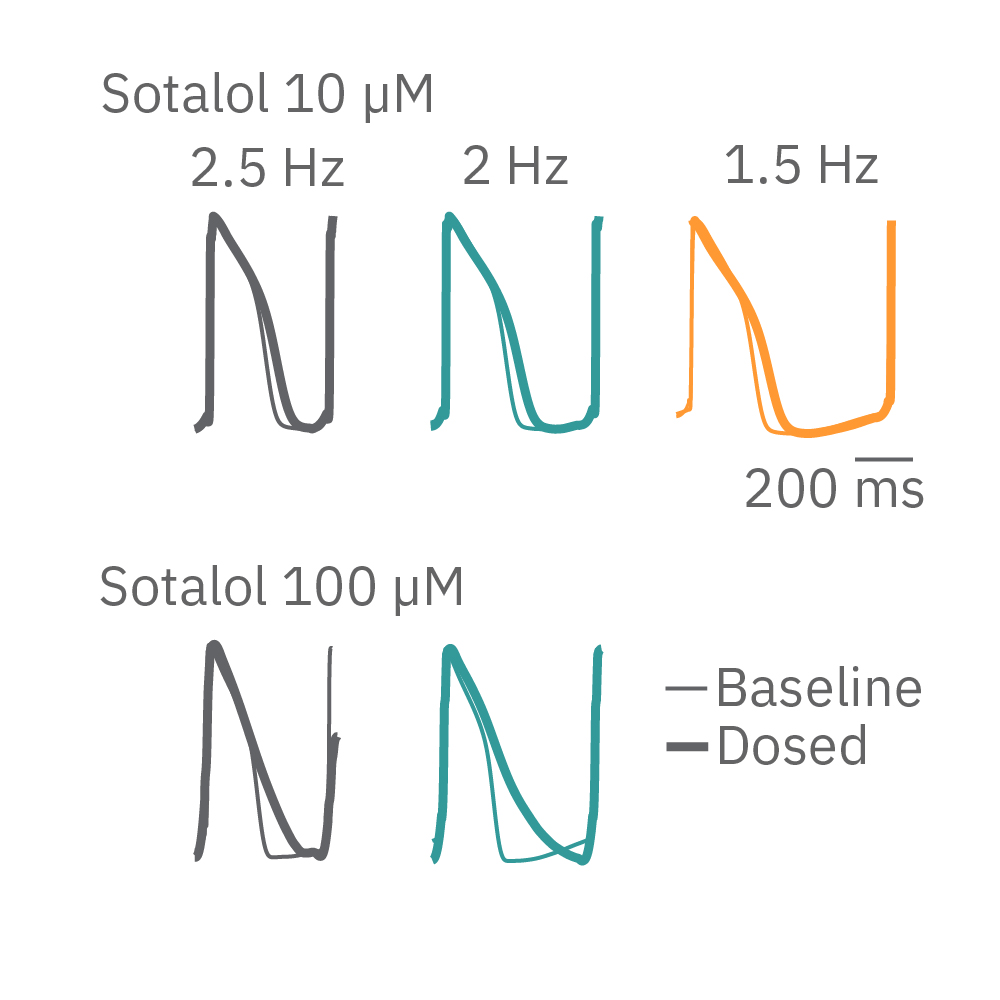
ヒトiPS細胞由来心筋細胞にチャネルロドプシン2 (ChR2) を導入し、光刺激装置 LUMOS で青色の光を照射し、異なるレートでペーシングした。各拍動レート毎にソタノールを投与したところ、APDの遅延は拍動レートの遅延に相関し、その逆使用依存性が示された。
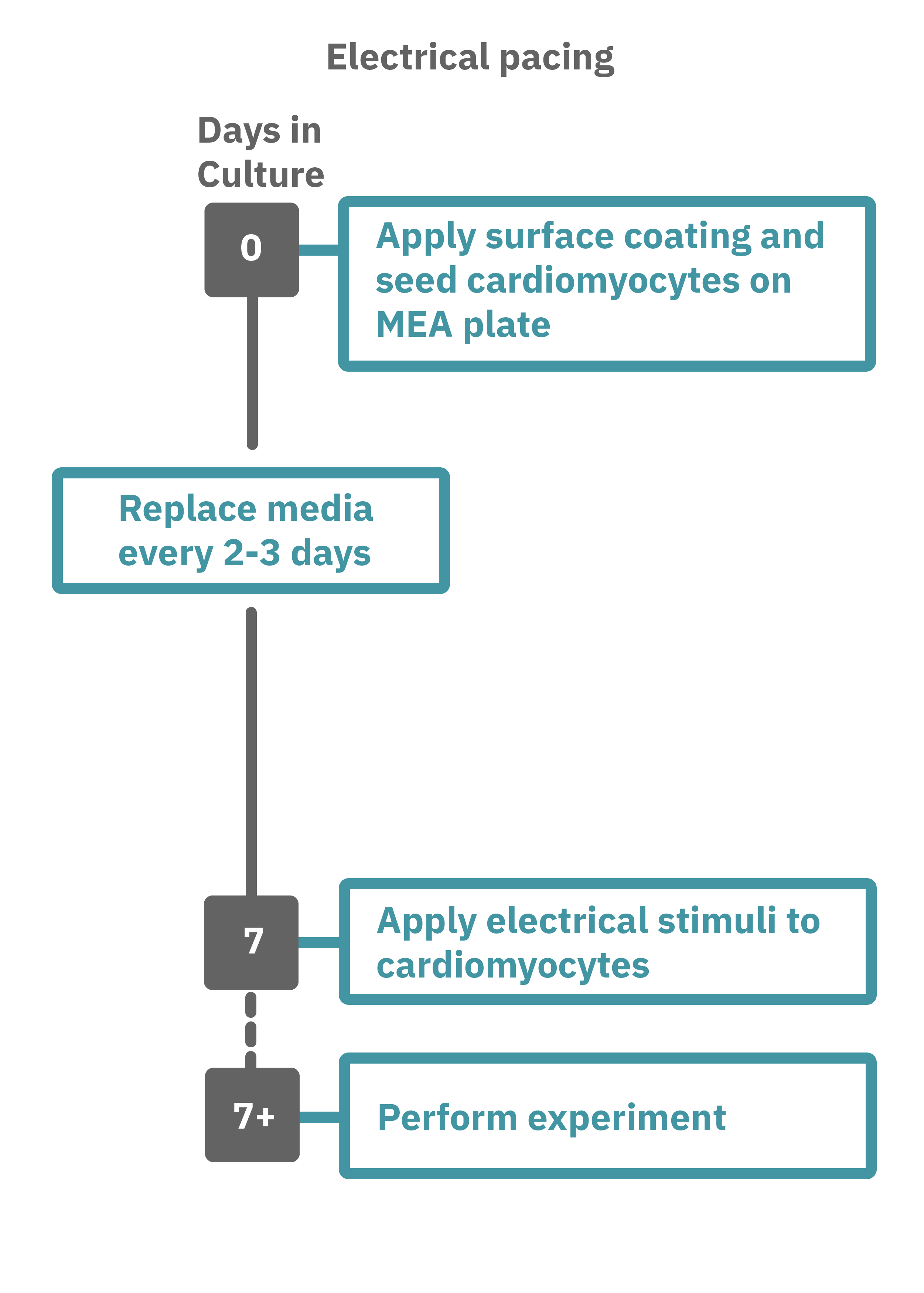
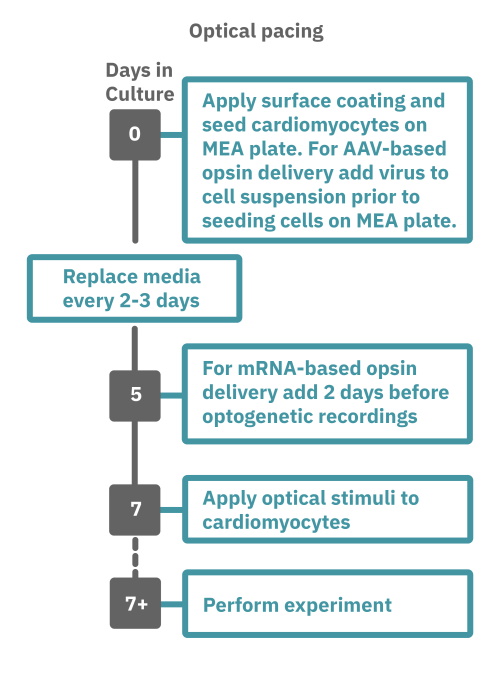
Maestro Pro/Edge による心筋細胞ペーシングアッセイは非常に簡単です。
コーティングされたMEAプレート上に心筋細胞を播種します (Day 0)。オプトジェネティクス試験においては、細胞播種時に、アデノ随伴ウイルスベクター(AAVベクター)を用いてウィルスを細胞懸濁液に添加します。オプシンの発現には7-14 日を要します。心筋細胞にmRNAベースのオプシンを導入する場合は、心筋細胞の活動ピーク時に導入し、オプシンの発現を2日間待ちます。
データ測定日 (例: Day 7+) にプレートを Maestro に搭載し測定を行います。光刺激装置 LUMOSを用いて光刺激を印加 (或いは Maestro 内蔵電気刺激装置を用いて電気刺激を印加)します。測定されたデータは付属のソフトで解析可能です。
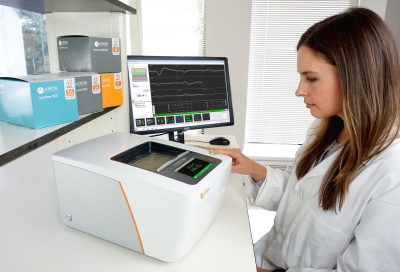
Maestro MEA による心筋細胞ペーシングアッセイ:特徴
-
電気刺激 - Maestro MEAプレート上の全電極から電気刺激の印加が可能です。刺激の印加やコントールは Axis Navigator ソフトウエア上で簡単に行えます。アーチファクト除去機能で、取得データの解析も容易です。
-
光刺激 - Maestro Pro/Edge での光刺激には、光刺激装置 LUMOS (特許取得) がご使用頂けます。各 well 毎の刺激強度、持続時間、波長のコントロールが可能です。
-
1システムで4種類のアッセイ - Maestro Pro/Edgeでは、1枚のプレートで次の4種類のアッセイが行えます。[1] 細胞外電位応答 [2] シグナル伝播 [3] Contractility (弛緩収縮評価) [4] LEAP (Action Potential 形態シグナル)
-
ラベルフリー・リアルタイムで細胞の電気的な活動を測定 - プレート上の電極を用いて心筋細胞の活動電位を測定します。ラベルフリー、リアルタイムな測定は、試薬など2次的要因によるゆがみがなく、細胞の変化をより正確にとらえます。また、数日から数週間に渡る慢性評価にも最適です。
-
同一プレート上で培養から測定まで - MEAプレート上で直接細胞を培養し、測定します。環境要因による変化を最小限にとどめながら、細胞への負担が少ない状態で、細胞の変化を検出することができます。
-
安定した環境下での実験 - 温度・CO₂ 濃度は、装置搭載のコントローラで自動制御されます。また、Maestro は外来ノイズ・振動に影響されにくい設計になっています。安定した環境で毎日安心して実験に望めます。
-
簡単操作 - 電気生理未経験の方でも簡単に実験が行えます。MEAプレート上に細胞を培養し、装置に搭載するだけで、心筋細胞の電気的な活動の測定が可能です。付属のソフトウエアパッケージを用いて、数クリックで複数の指標に基づいた解析結果が得られ、結果の作表まで行うことができます。

Cardiac MEA
Show Full DetailsWhat is a microelectrode array (MEA)?
Microelectrode arrays (MEA), also known as multielectrode arrays, contain a grid of tightly spaced electrodes embedded in the culture surface of the well. Electrically active cells, such as cardiomyocytes, are cultured on top of the electrodes. When neurons fire action potentials, the electrodes measure the extracellular voltage on a microsecond timescale. As the cells attach and connect with one another, an MEA can simultaneously sample from many locations across the culture to detect propagation and synchronization of cardiac activity across the syncytium.
That’s it, an electrode and your cells. No dyes, no incubation steps, no perfusion, no positioning things just-so; just your cells in a well. Because the electrodes are extracellular (they do not poke into the cells), the recording is noninvasive and does not alter the behavior of the cells, you can measure the activity of your culture for seconds or even months!
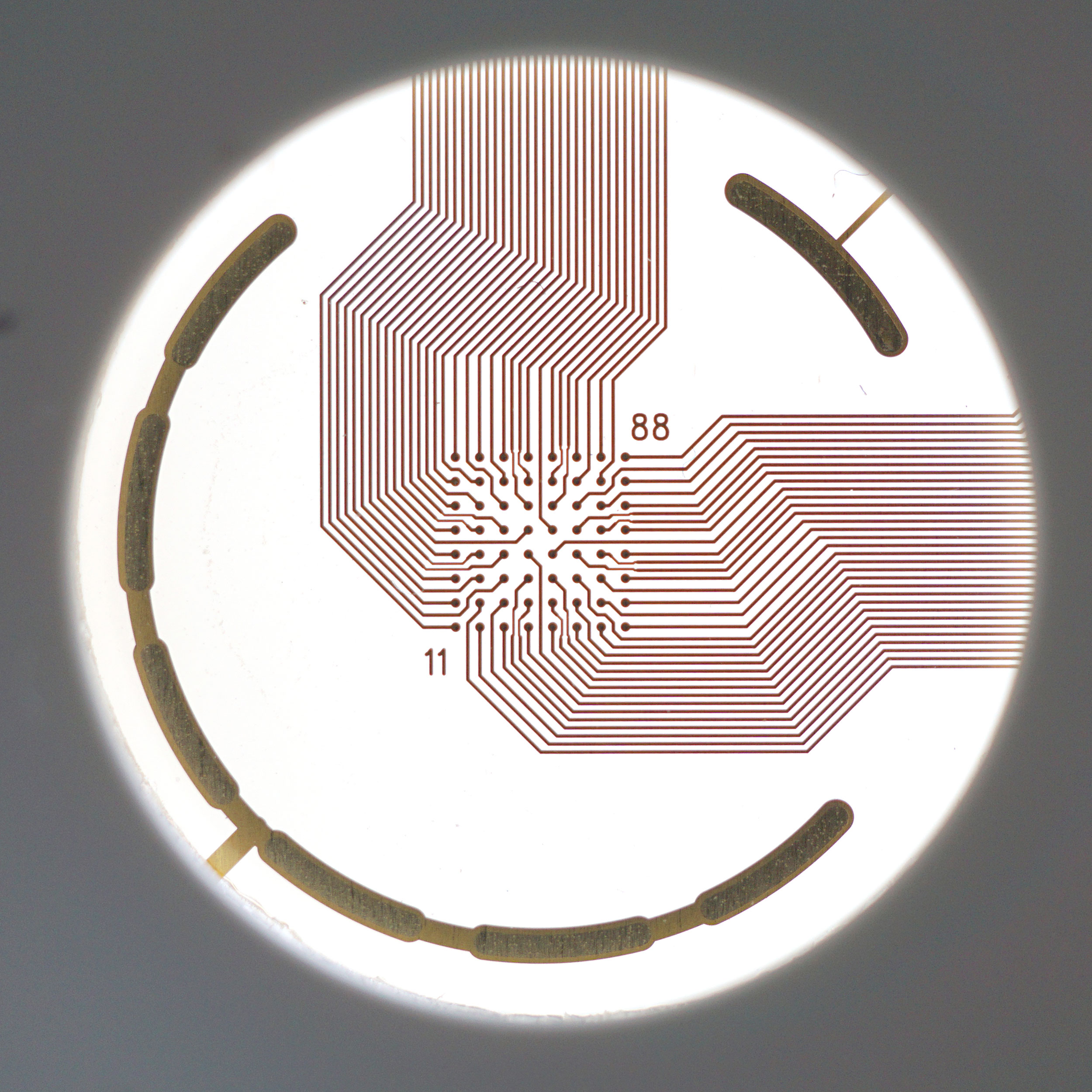
An MEA of 64 electrodes embedded in the substate at the bottom of a well.
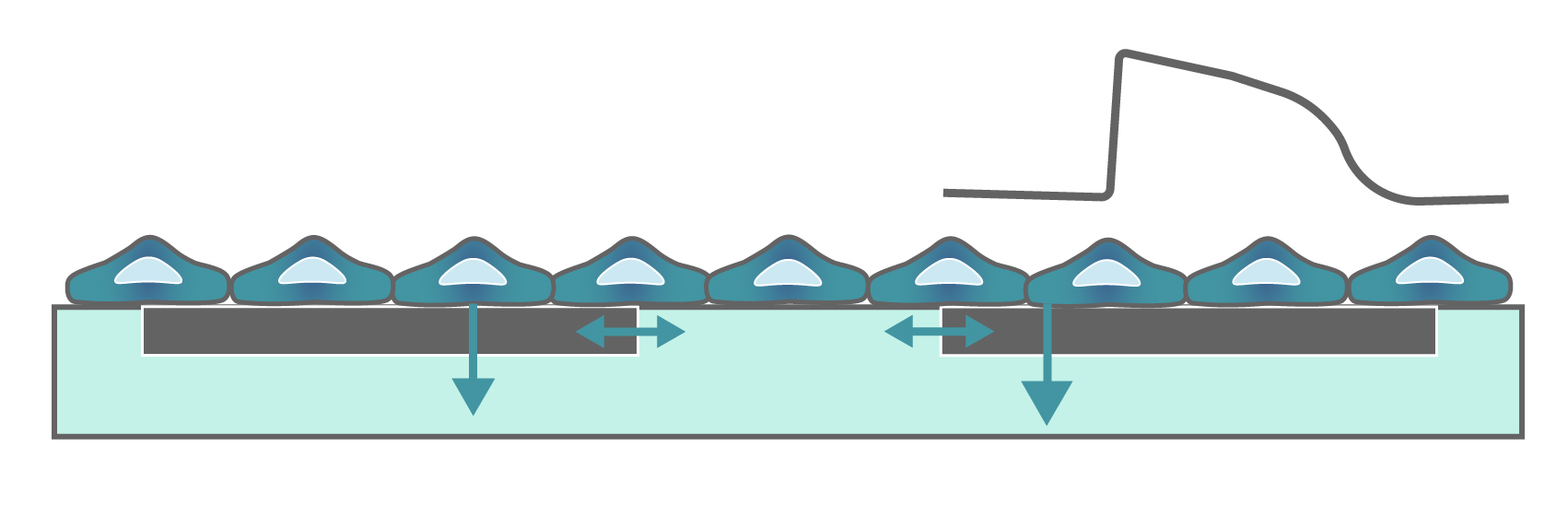
Cardiomyocytes attach to the array and form a network. The microelectrodes detect the action potentials fired as well as their propagation across the network.
Heartbeats in a dish
When cardiomyocytes are cultured on top of an MEA, they attach and connect to form a spontaneously beating sheet of cells, called a syncytium. When one cardiomyocyte fires an action potential, the electrical activity propagates across the syncytium causing each cell to fire and then contract. The electrodes detect each individual action potential and contraction, as well as the propagation of this activity across the array.
The propagating electrical signal is detected by the electrodes as an extracellular field potential. The field potential derives from the underlying cardiac action potential, but more closely resembles a clinical electrocardiogram (ECG) signal. The initial depolarization phase is seen as a sharp spike, similar to the QRS complex, and the slow repolarization is seen as a small slow spike, like a T-wave. The time from the depolarization to repolarization is termed the field potential duration (FPD) and is a key metric in predictive cardiotoxicity screening assays.
While most record the cardiac field potential, the Maestro Pro and Edge MEA systems can also measure local extracellular action potentials, or LEAP. LEAP induction increases the coupling between the microelectrodes and the cardiomyocytes, transforming the extracellular signal from a field potential to an action potential. LEAP provides additional and complementary metrics such as rise time, action potential duration (APD), triangulation, and automated early after depolarization (EAD) detection.
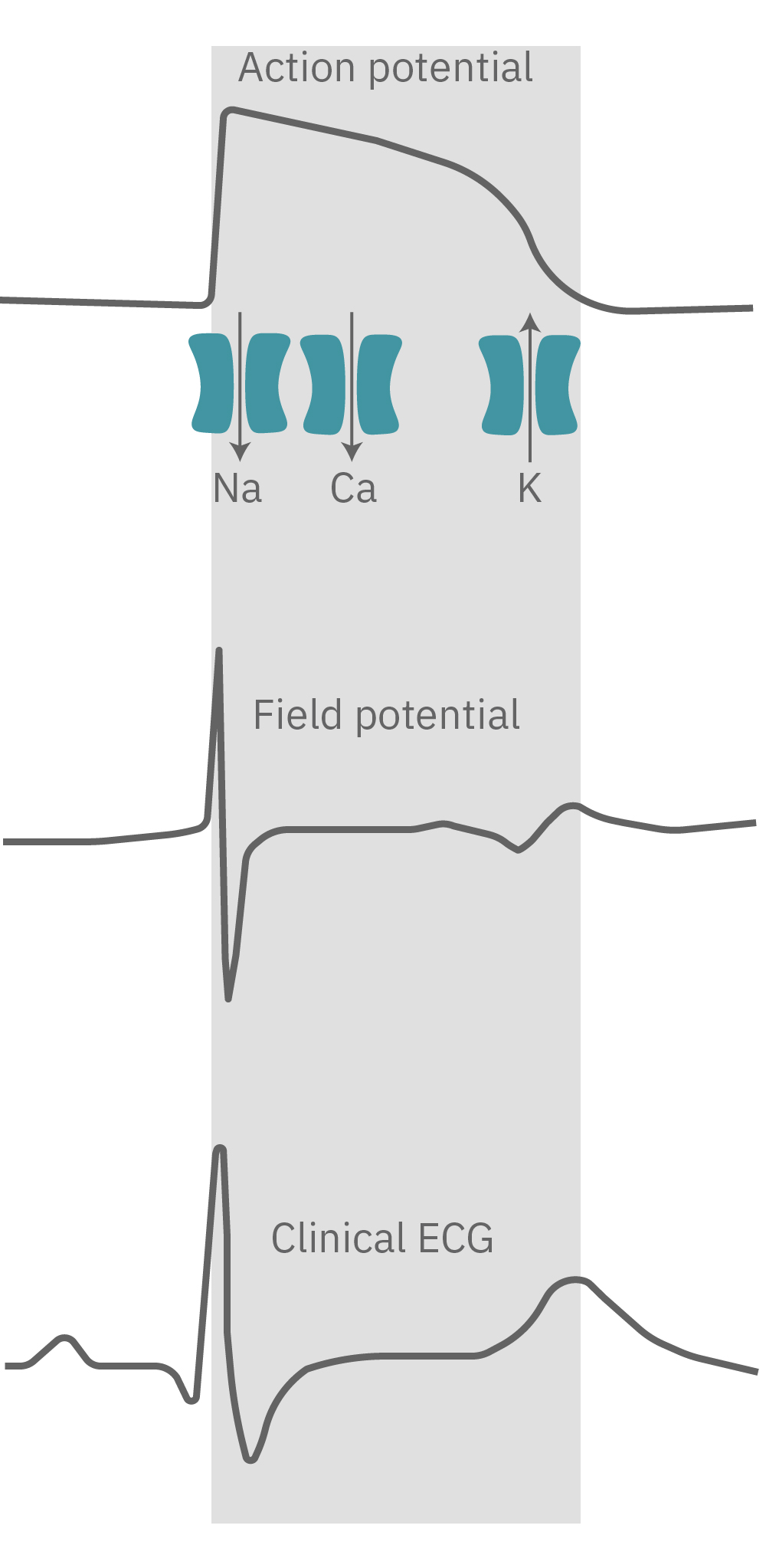
The cardiac action potential propagates from cell to cell across the syncytium. The MEA detects this activity as an extracellular field potential, which closely resembles the clinical ECG.
Do more with multiwell
Axion BioSystems offers multiwell plates at many throughputs, from 6-wells to 96-wells, with an MEA embedded in the bottom of each well. Each well represents its own unique cell culture and conditions, creating up to 96 experiments on one plate. Multiwell MEA allows you to study complex human biology in a dish, from a single cell firing to network activity, across many conditions and cell types at once.
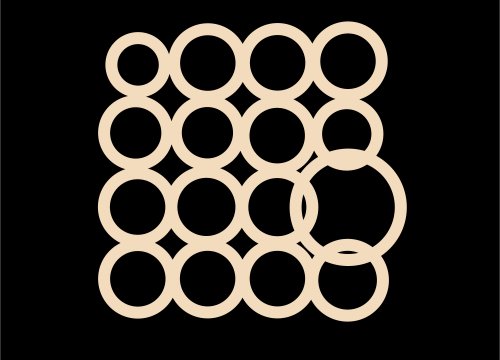
Contractility
Show Full DetailsContractility: Using array-based impedance
Every beat of the heart is characterized by a contraction of the heart that pumps the blood out to the body. When cardiomycoytes are cultured on top of electrodes, they form a spontaneously beating syncytium. With each beat, the cells contract and relax, changing their shape and coverage over the electrodes. These changes can be measured as a change in impedance, or contractility.
Contractility is often used to characterize the mechanical properties of induced pluripotent stem cell-derived cardiomyocytes and to detect the effects of compounds on cardiac contractile function (e.g. inotropes). Measures such as beat amplitude, beat period, and excitation-contraction delay reveal changes in contractile function due to cardiomyocyte maturation or compound addition.
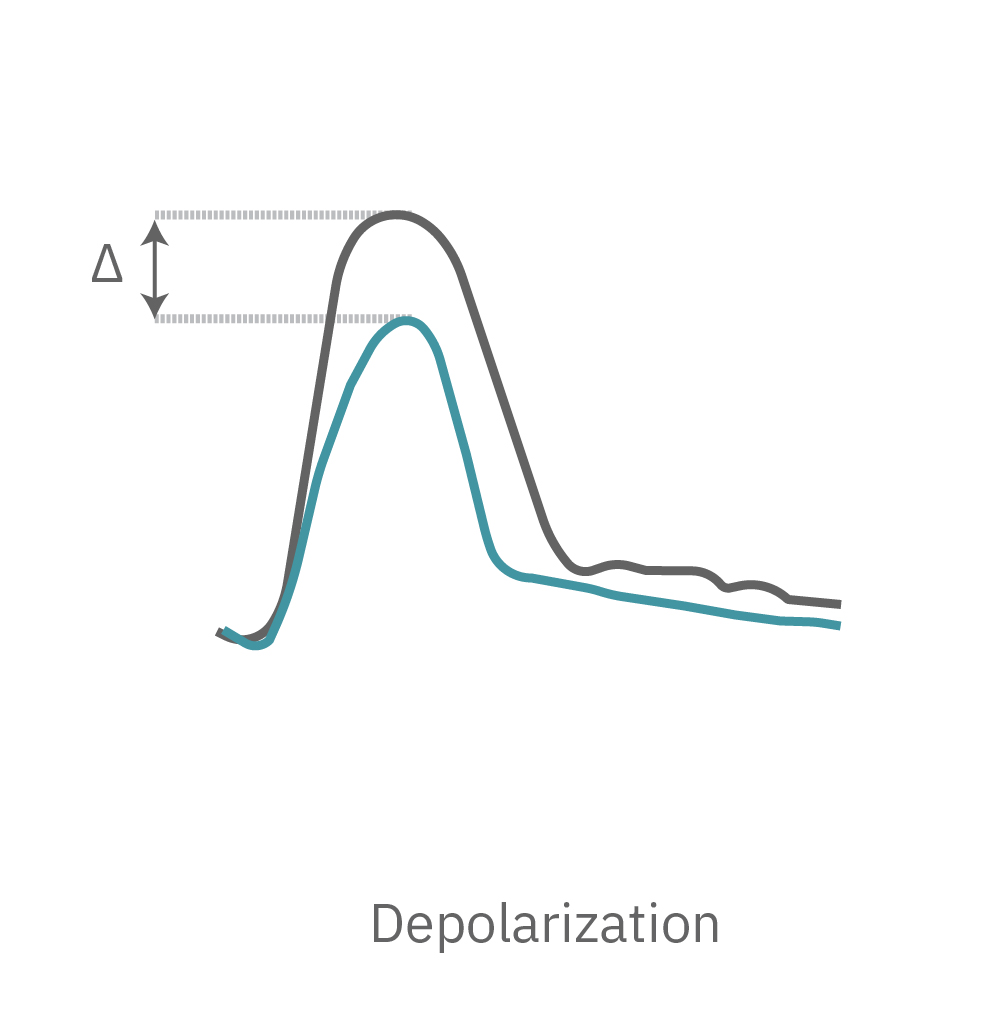
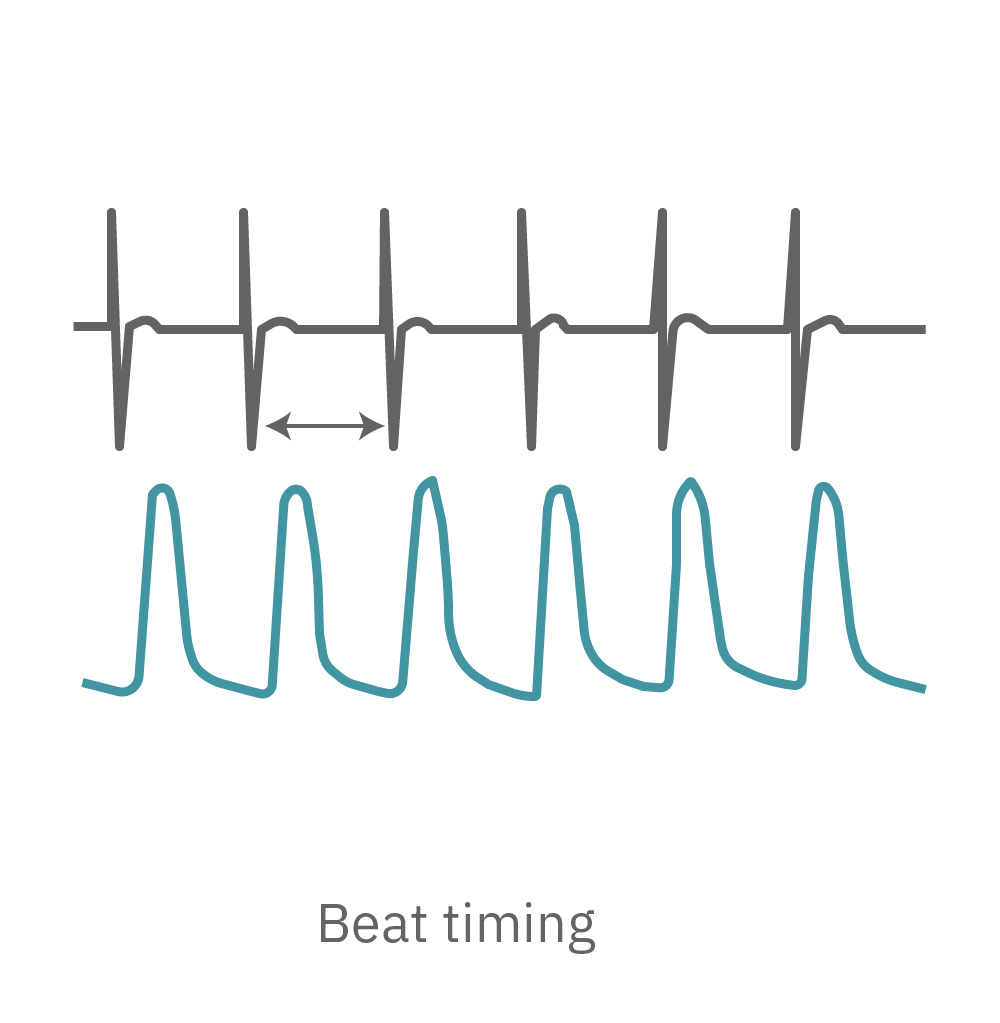
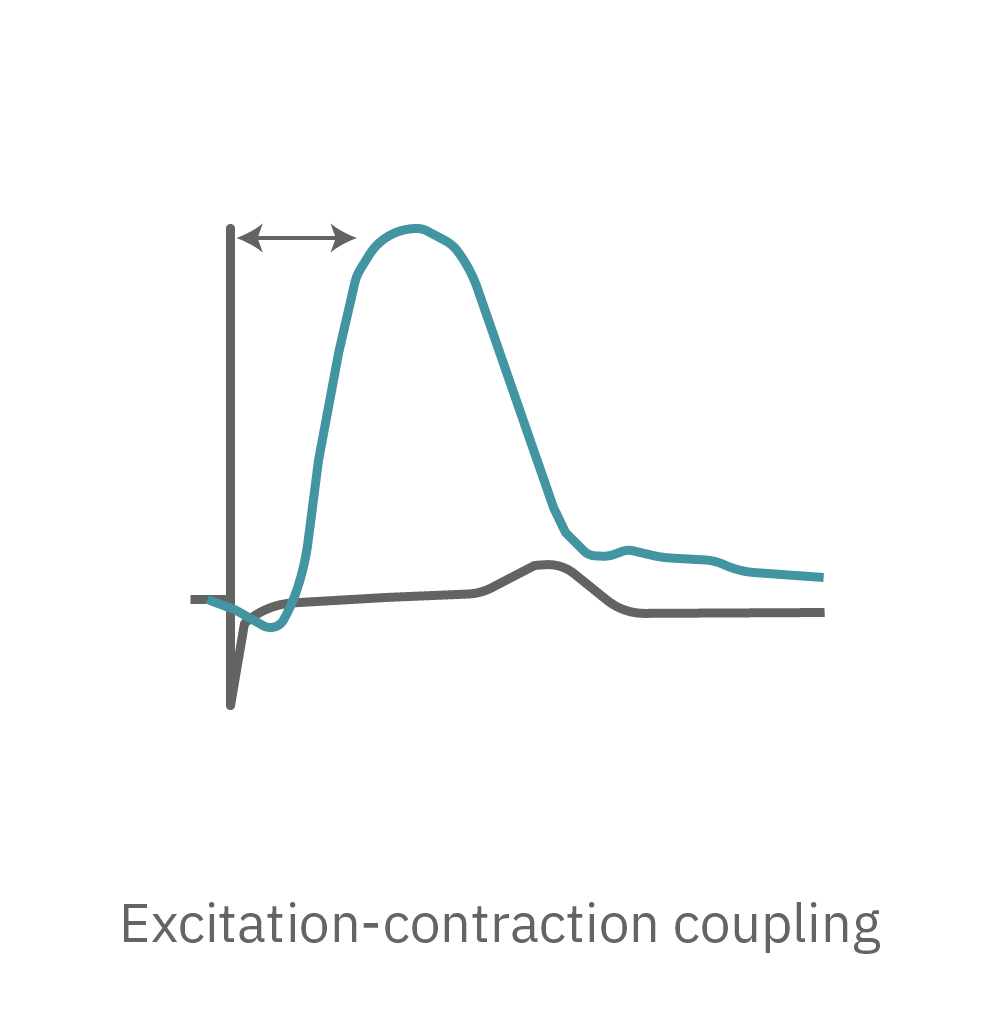
The Maestro Pro and Edge provide key parameters of cardiomyocyte contractile function, including beat amplitude, beat period, and excitation-contraction delay. The Maestro systems are the only platforms that can measure the coupling between the electrical (field potential) and contractile signals from the same cells over the same electrode at the same time.
Most contractility platforms measure contractility from one or two large electrodes. The Maestro Pro and Edge use an array of microelectrodes to measure high-resolution contractility from multiple locations across the syncytium. Array-based contractility can be used to track propagation and characterize variability. In addition, by simultaneously monitoring both the field potential and the contraction from the same electrode, the Maestro provides highly precise measurements of beat timing and excitation-contraction delays.
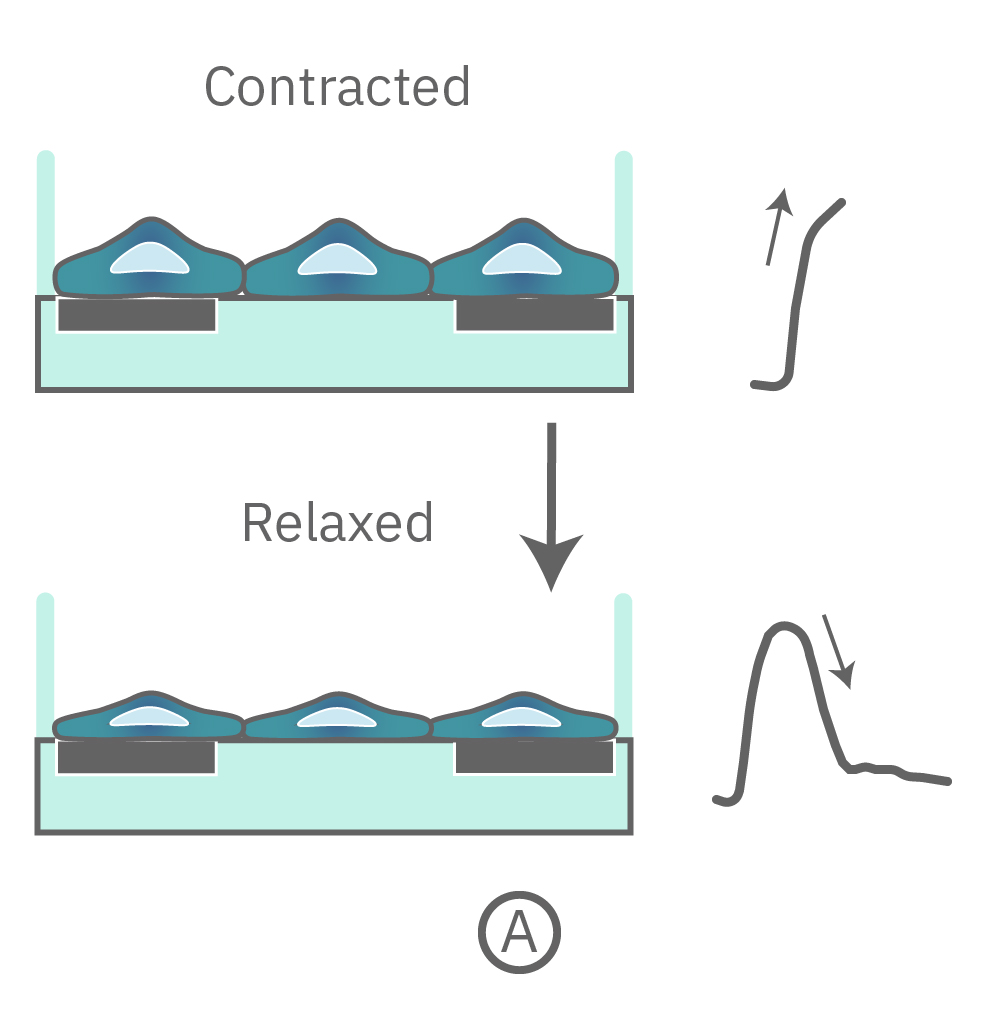
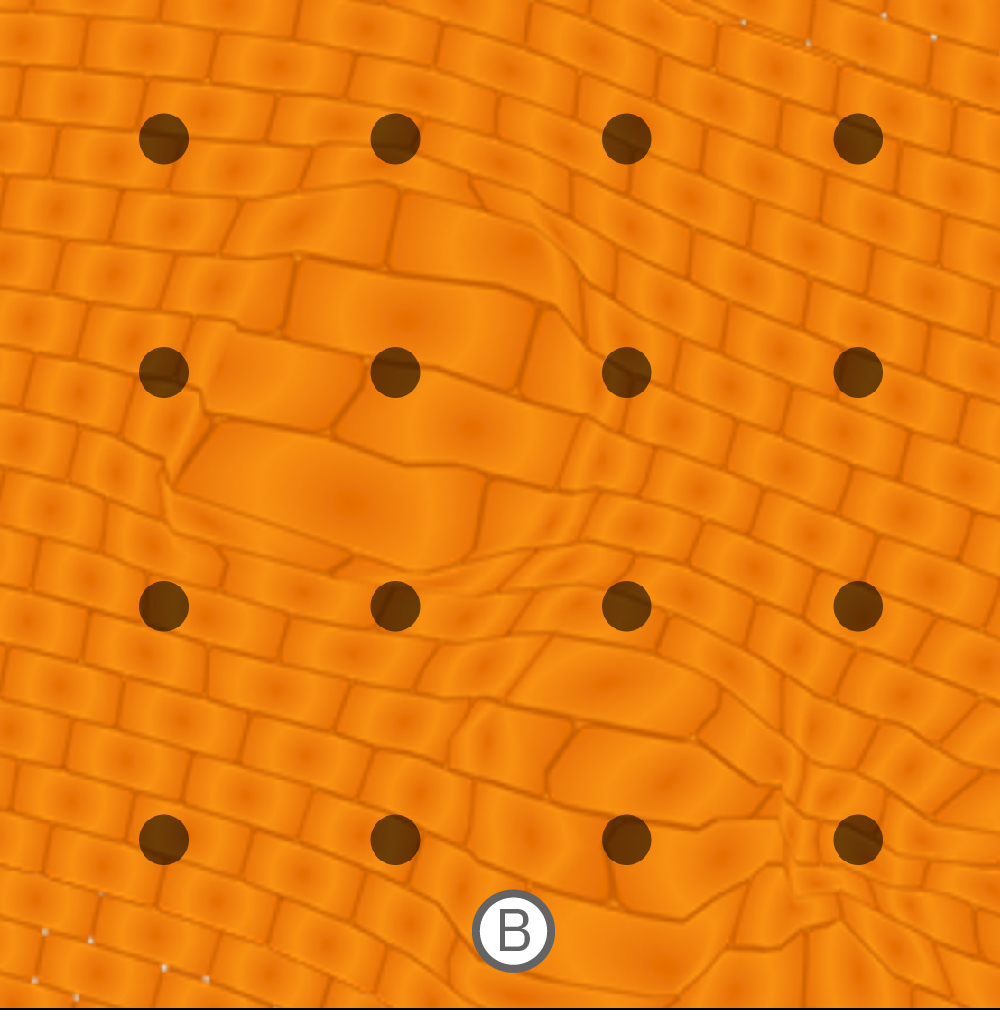
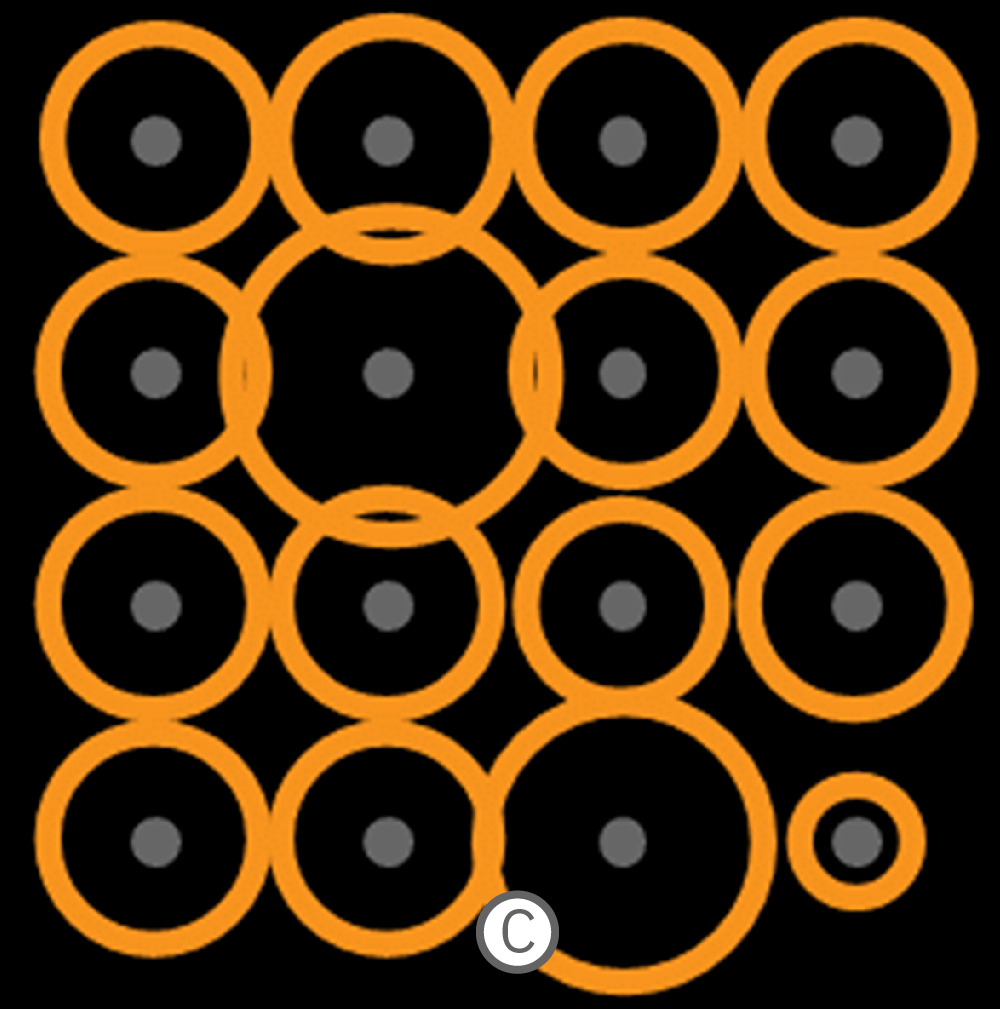
(A) Contraction and relaxation are detected as an increase and decrease in contractility (gray arrows). (B) The microelectrode array detects regions that are contracting while others are being stretched. (C) This pattern is represented as a contractility map, where the relative size of each circle indicates whether local cells are contracting or being stretched.
Contractility in 3D
Using an array of microelectrodes for contractility offers many advantages, including assessing variability across the syncytium and variations in cell culture coverage. Recording from microelectrodes enables advanced applications, such as measuring contractility from multiple 3D cardiac spheroids in the same well. A larger electrode would either smear these signals or fail to detect them at all. The microelectrodes provide high spatial resolution recordings to detect the distinct beating patterns in each area of the well.
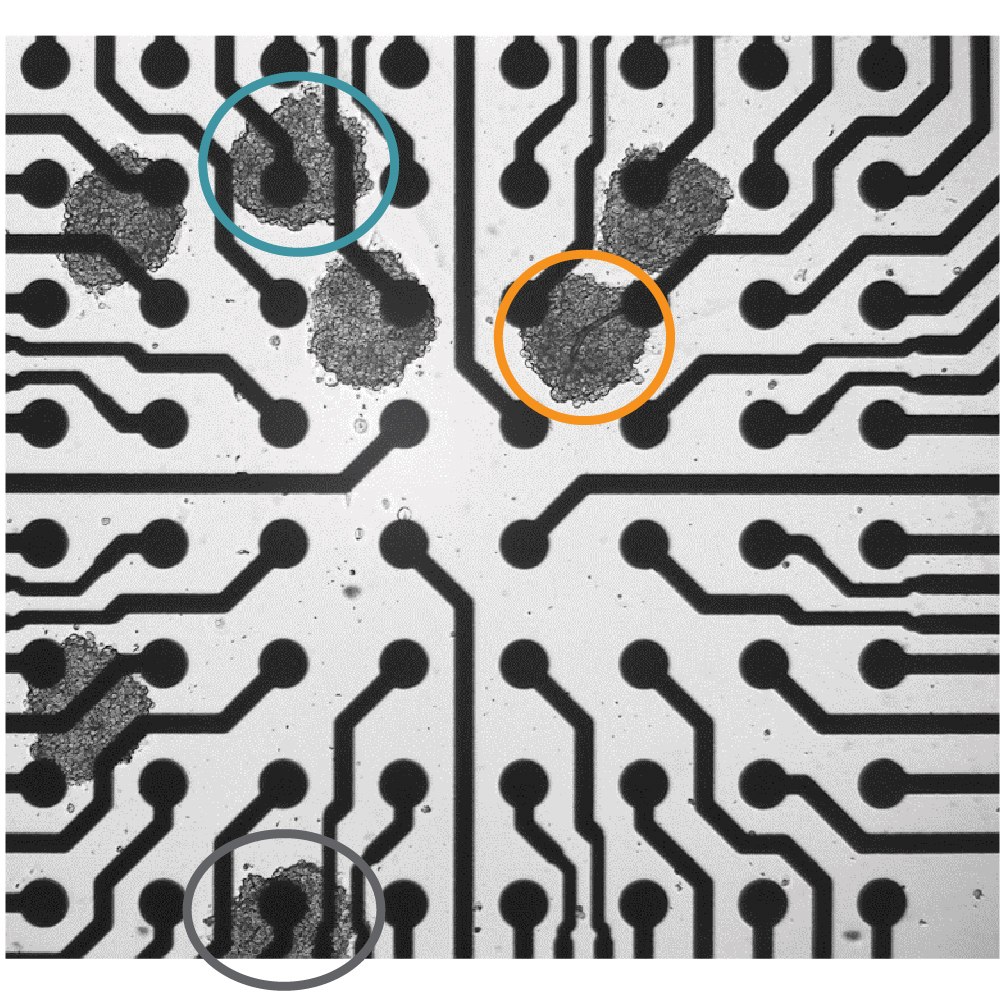
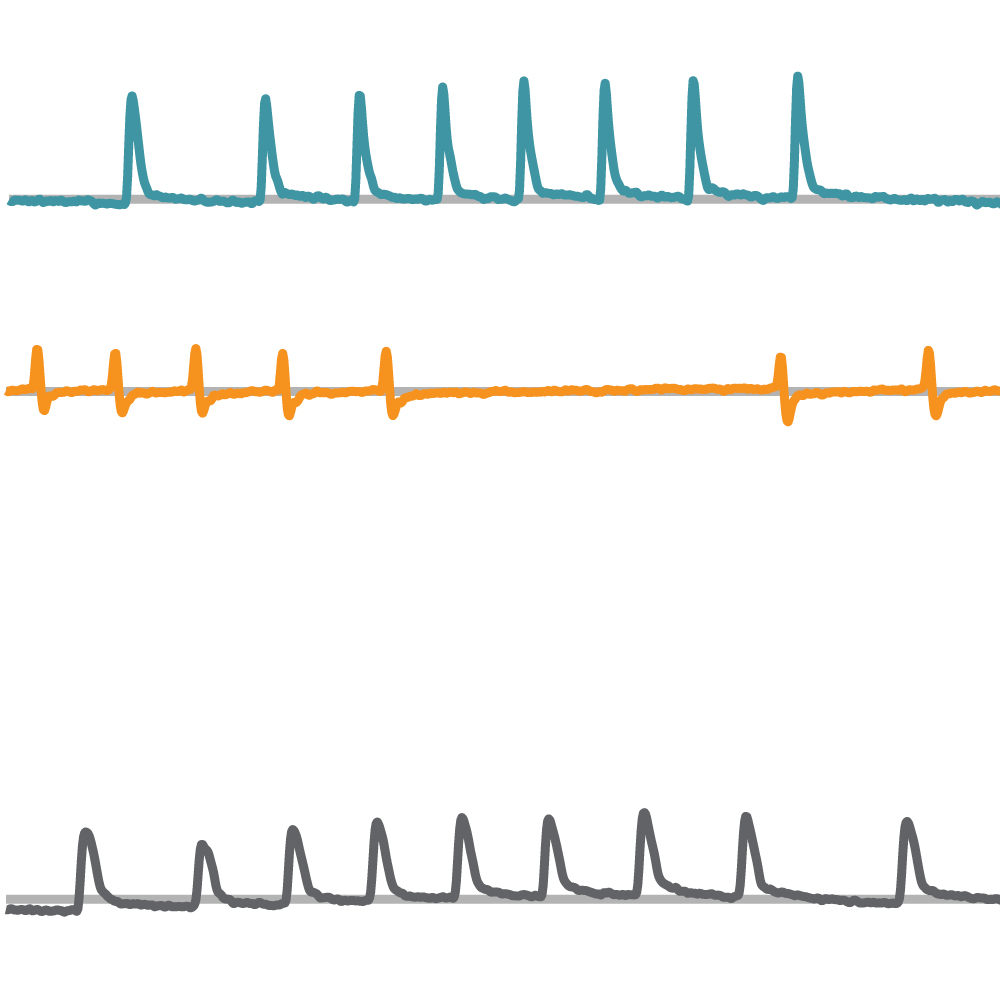
Seven spheroids of human induced pluripotent stem cell-derived cardiomyocytes were deposited in a CytoView MEA 6-well plate. The spheroids beat independently, exhibiting unique contractile patterns that were detected and distinguished using array-based contractility on the Maestro.
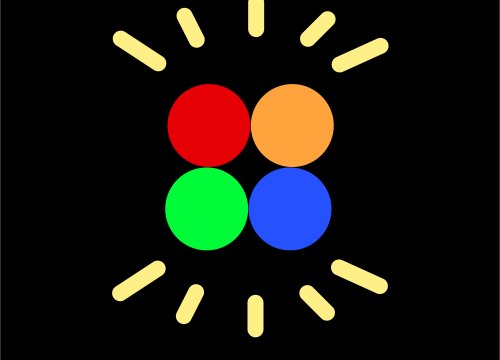
Optogenetics
Show Full DetailsOptogenetics: Using light to control cells
Optogenetics is a technique that involves the use of light to control cell function. Cells are first genetically modified to express light-sensitive ion channels, called opsins. Then, light can be used to activate the opsin. The most well-known opsins are light-gated ion channels that can control the excitability of the cell membrane. When activated by the opsin-specific wavelength of light, the channels open allowing ions to flow across the cell membrane to either excite or inhibit the cell. Optogenetics enables precise control over a targeted cell population.
Many opsins, many options
Since the first microbial opsin was introduced into mammalian neurons in 2005, many different opsins have been used to control the excitability of electroactive cells such as neurons and cardiomyocytes. Each opsin is sensitive to a specific wavelength range, or color of light and induces a precise biological event.
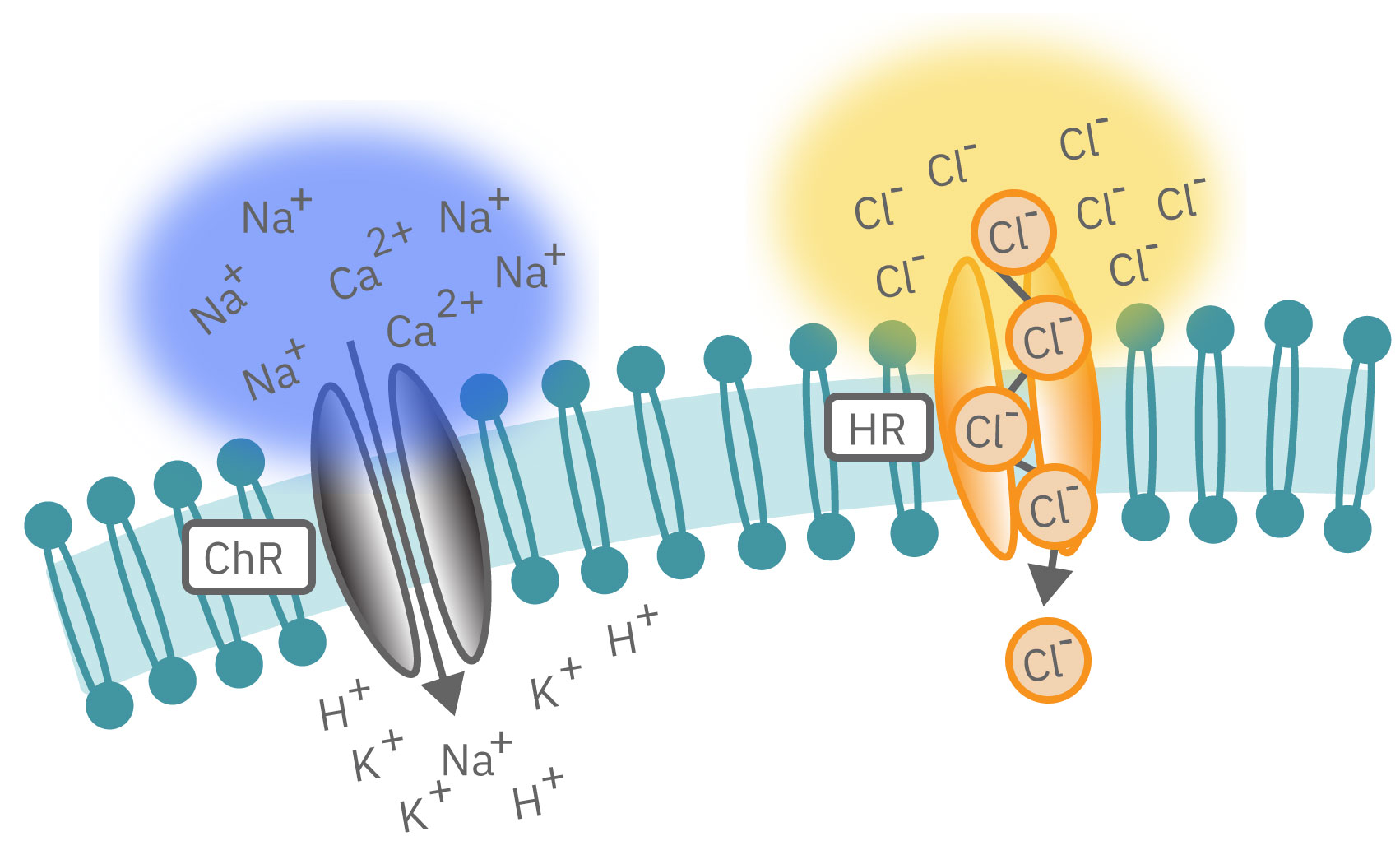
Channelrhodopsin (ChR2), for example, is activated by blue light. When ChR2 opens, positive cations (like sodium and calcium), flow into the cell, depolarizing or exciting the cell. In contrast, halorhodopsin and archaerhodopsin both inhibit cell excitability by hyperpolarizing the cell in response to yellow or green light, respectively. With optogenetics, you can turn on and off cells like a light switch.
The timing of these light-activated events is fast, facilitating highly precise control. First generation opsins, such as channelrhodopsin, open and close in milliseconds, ideal for kicking off an action potential. Second generation opsins have fined tuned kinetics for even faster, more precise control or slower, longer-lasting inhibition. For example, step-function opsins stay open until another pulse of light switches them off.
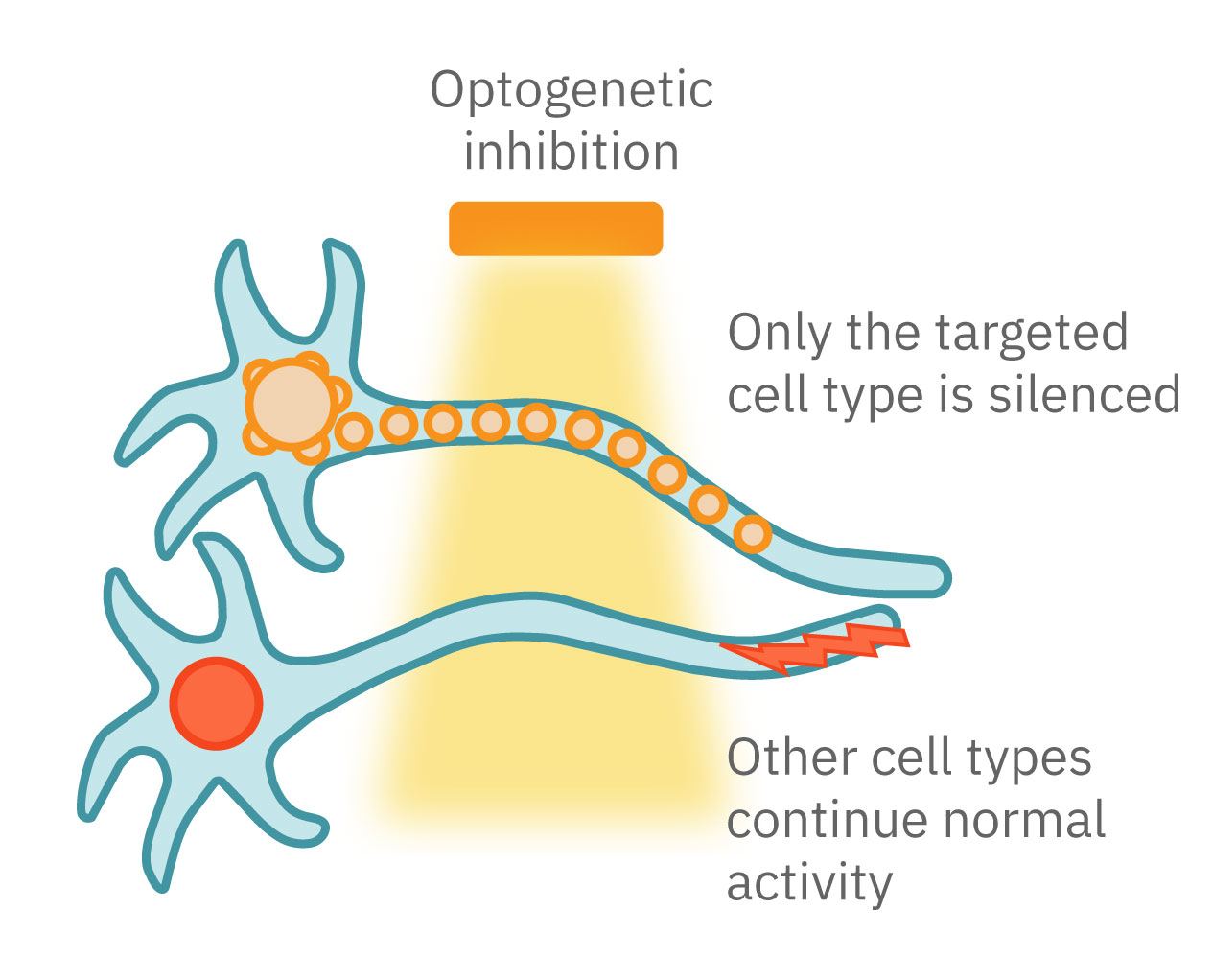
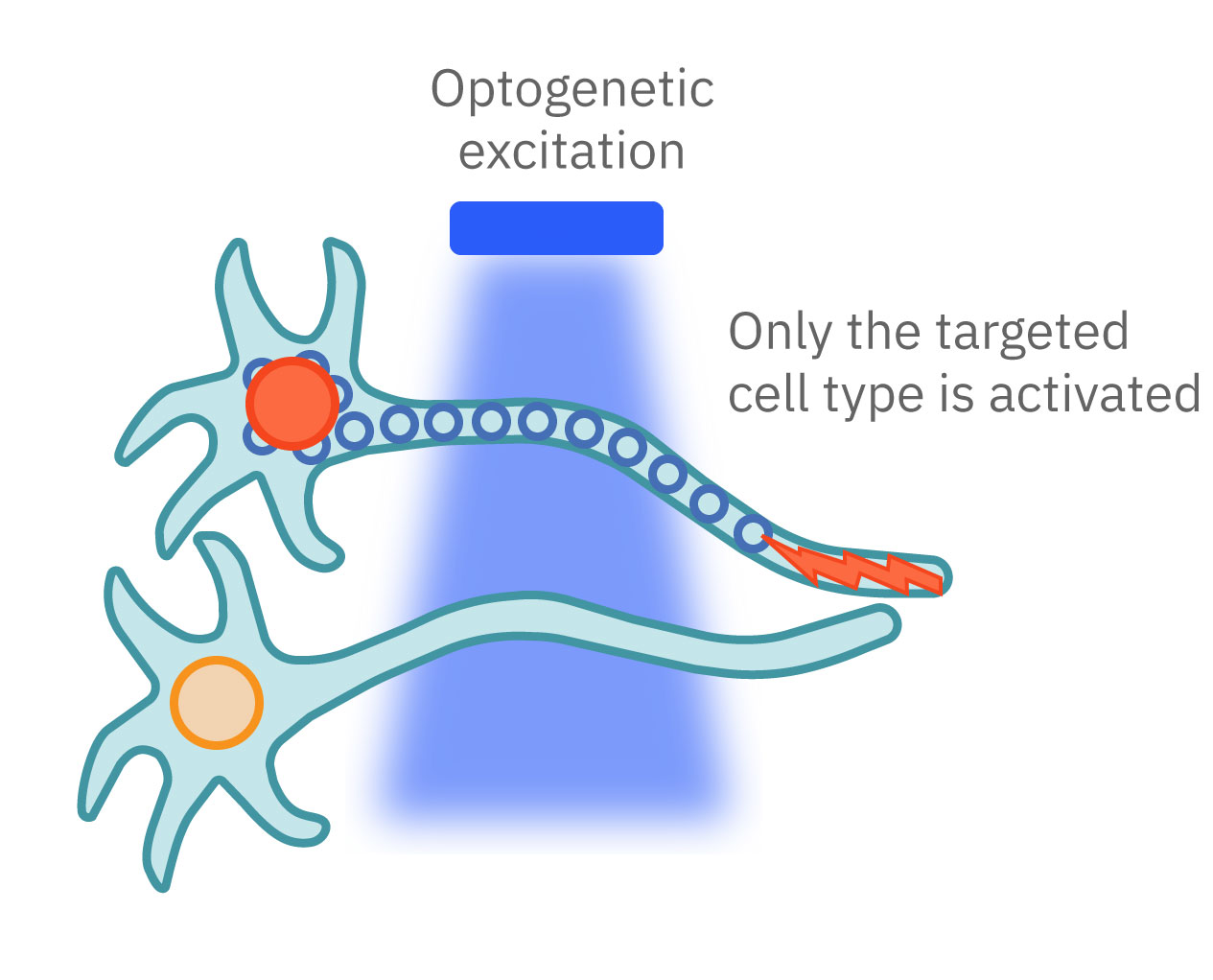
Optogenetics can precisely control which cells are turned on or off by employing different gene promoters for opsin expression. Opsins can be expressed in all neurons or used to control specific subpopulations. Unlike electrical stimulation, which excites all nearby cells, optical stimulation can be finely targeted to the cells expressing the opsins responsive to a narrow band of light wavelengths.
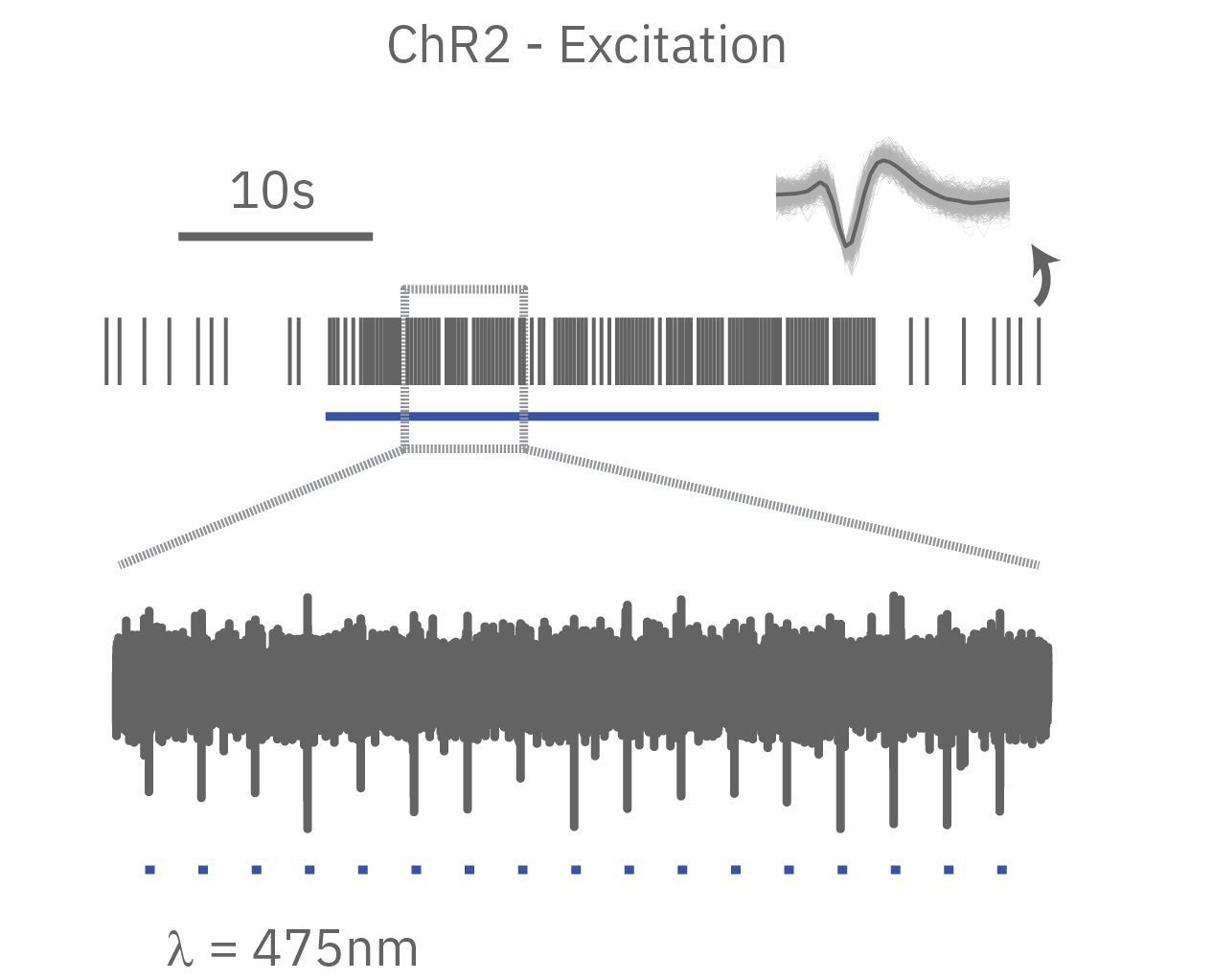
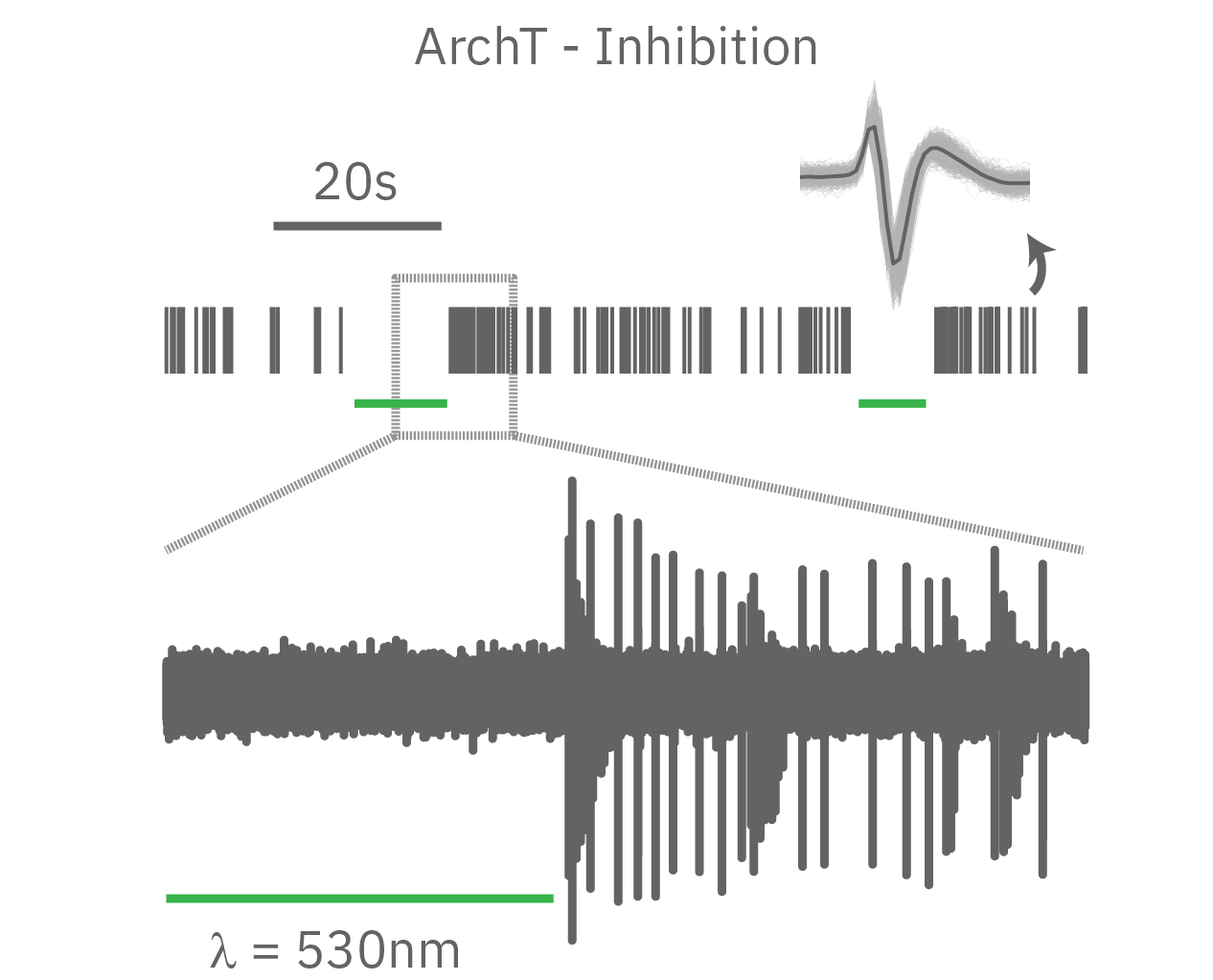
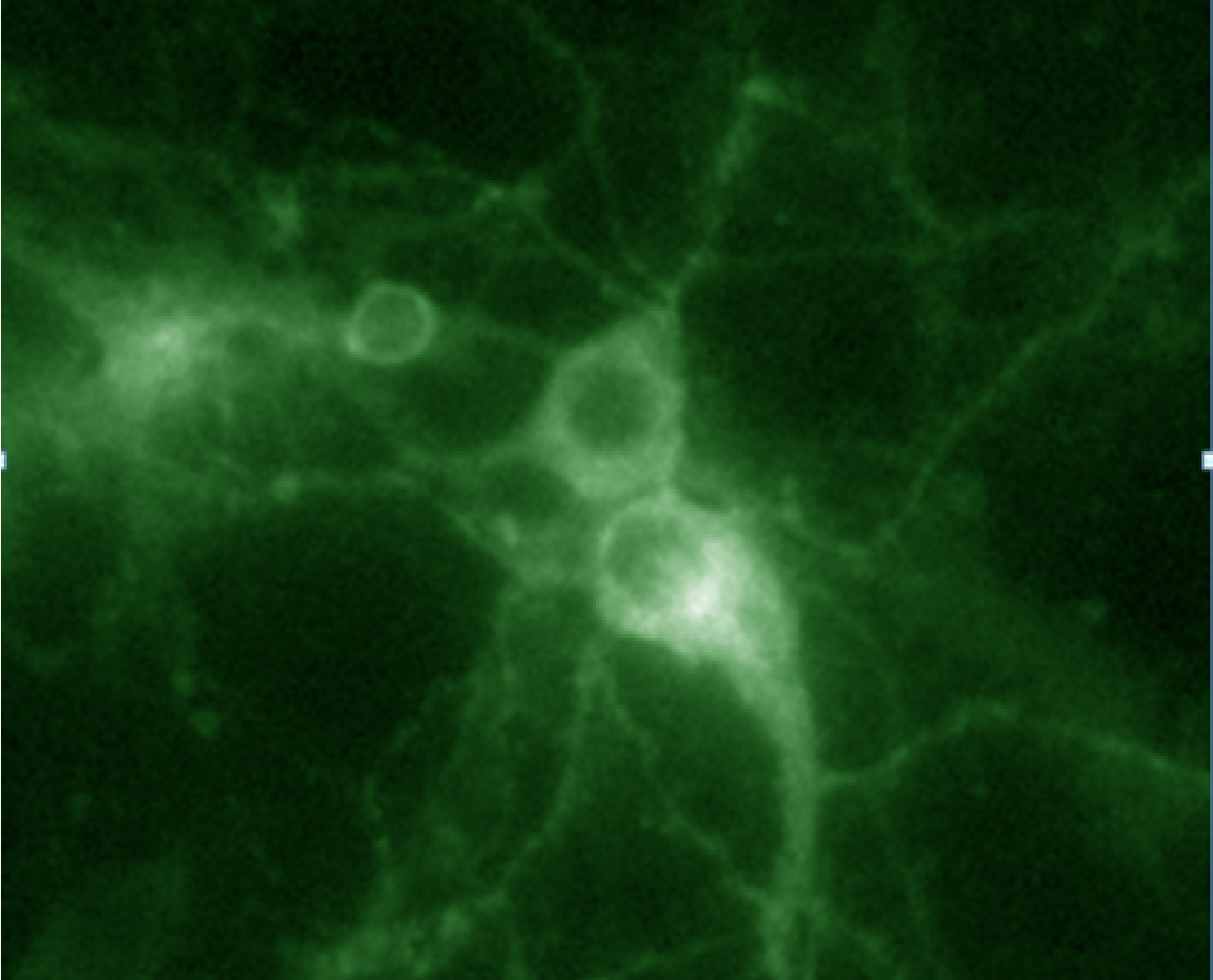
In summary, optogenetics is a powerful toolbox for precise control over targeted cell populations at fast time scales. Superior spatial and temporal control, reversibility, and easy stimulus delivery make exploring complex biology simpler than ever before.
More than just ion channels
As the field has advanced, opsins have been used to control more than just ion flow. Light-activated gene expression with light-inducible transcription factors can control the proteins made by cells. The combination of optogenetics with CRISPR provides even greater control over CRISPR/Cas9 gene editing.
Opsins have also been incorporated into many biochemical and intracellular signaling pathways to control key protein functions. MAPK and PI3K pathways, Rho family GTPase activation, apoptosis, and protein trafficking can now all be precisely controlled by light.
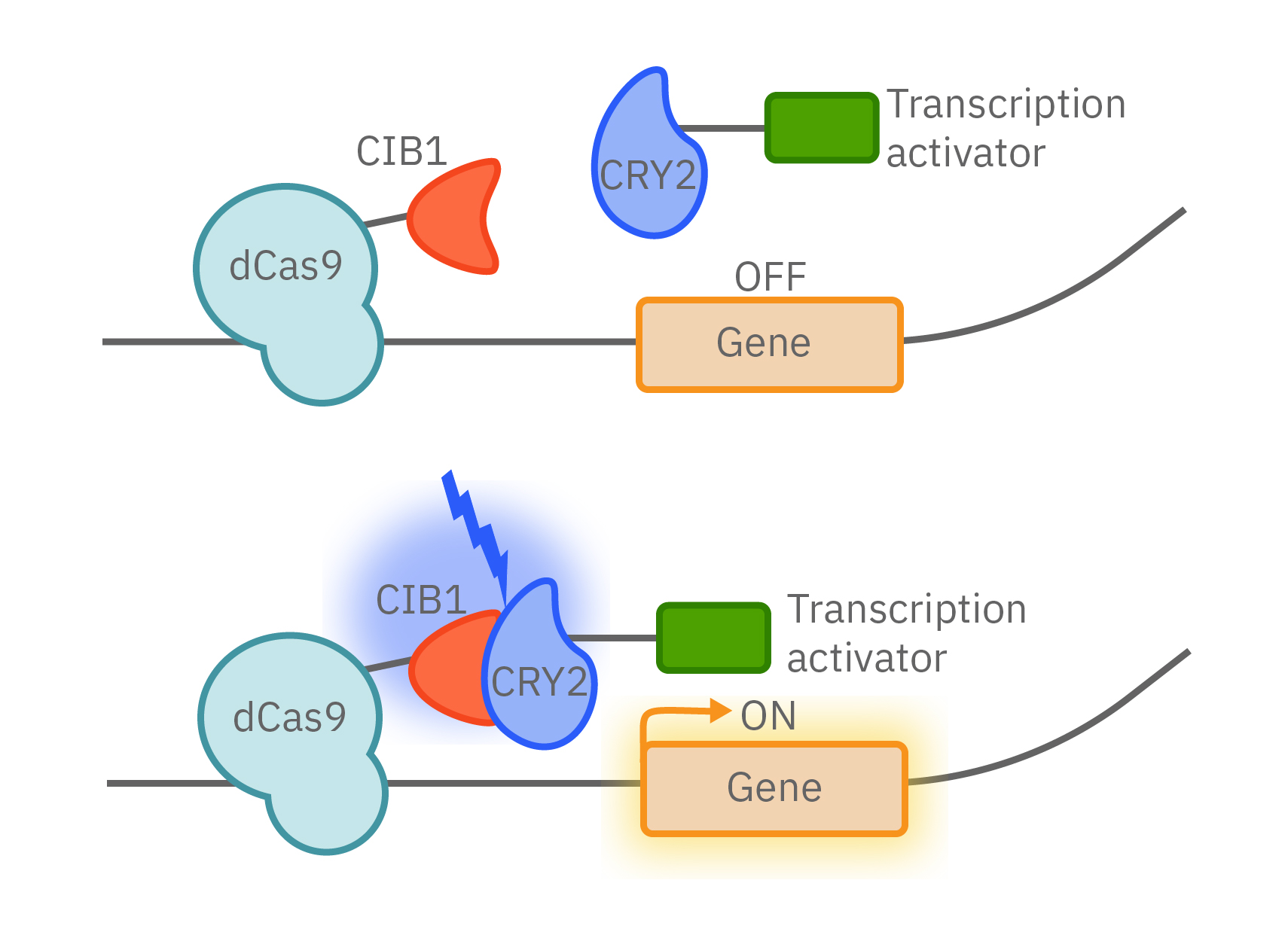
Shining light in vitro
Sophisticated biology like optogenetics demands sophisticated technology to explore it. In vitro technology relied on single wavelength lasers and custom lab-specific tools while many in vivo technologies were quickly developed for optical stimulation. The Lumos Optical Stimulation system is the first-of-its-kind multiwell optical stimulator with the ability to deliver up to four wavelengths of light per well with microsecond precision. From controlling the excitability of your neurons to pacing the beating of your cardiomyocytes, discover how the Lumos and optogenetics can revolutionize your assay.
